Best consoles for live mixing 2025: Our pick of the best gig-ready live mixing boards
The best analogue and digital mixers for live music, from solo musicians to full bands
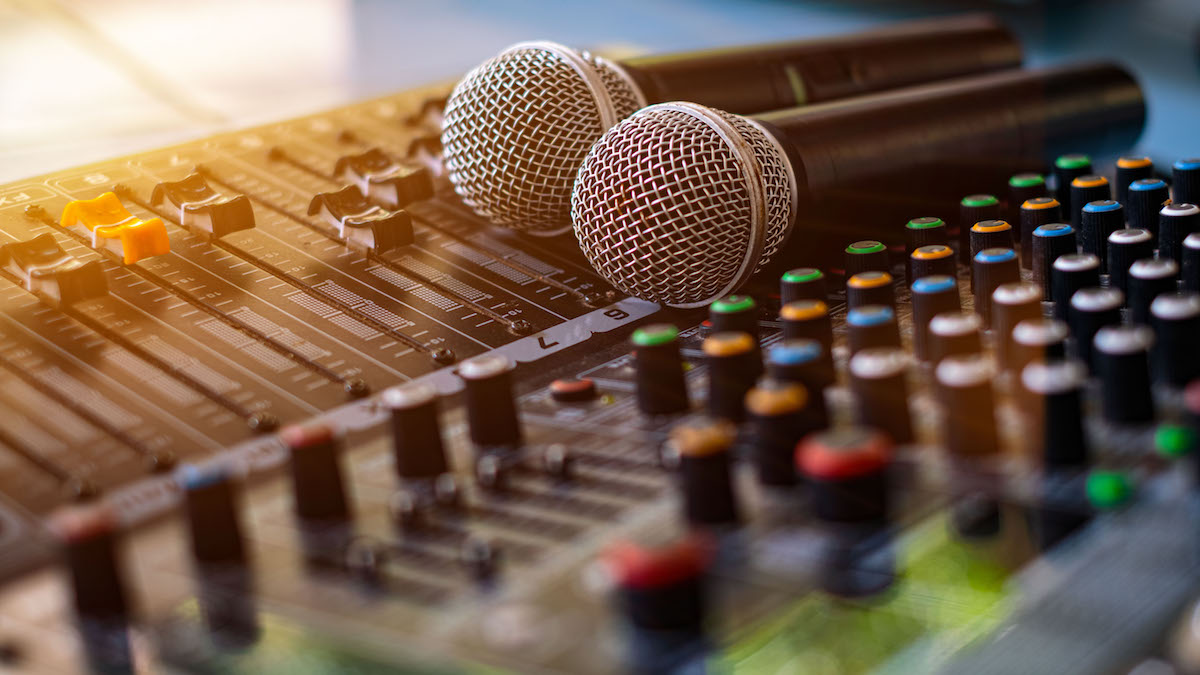
As the lights begin getting switched on again, and society slowly wakes back up following periods of lockdown, the prospect of live music resuming is back on the agenda. And how we have missed it. While we’ve all made the best of Zoom calls, streamed live sessions and suchlike, nothing can replace the experience of watching talented people perform music in the flesh. If you’re one of those looking to get back up on stage, you probably want to review the gear you’re using so we’ve rounded up the best consoles for live mixing you can buy right now.
From simple, plug and play affairs for a solo artist performing in a coffee shop, through to expansive multi-input desks for larger venues and groups, we’ve picked our favourites to help you sound as good as you can. We were all guilty of perhaps taking live music for granted before the pandemic. Let’s never do that again.
Take a look at our top picks below, or hit the buying advice button above for more guidance.
- Get ready to gig with the best PA speakers
- Protect your hearing with the best earplugs for musicians
Best consoles for live mixing: Our top picks
There are plenty of options when it comes to choosing a console for live mixing and while there’s always room for a bit of versatility, as a pure live mixing desk the Yamaha MG16XU is a great choice. It boasts enough connectivity to accommodate a full band – other sizes are available too – and its solid construction gave us confidence it would last a lifetime of use.
Credit also goes to the Mackie MX12FX; what it lacks in bells and whistles, it more than makes up for in its simplicity and attractive price.
Best consoles for live mixing: Product guide
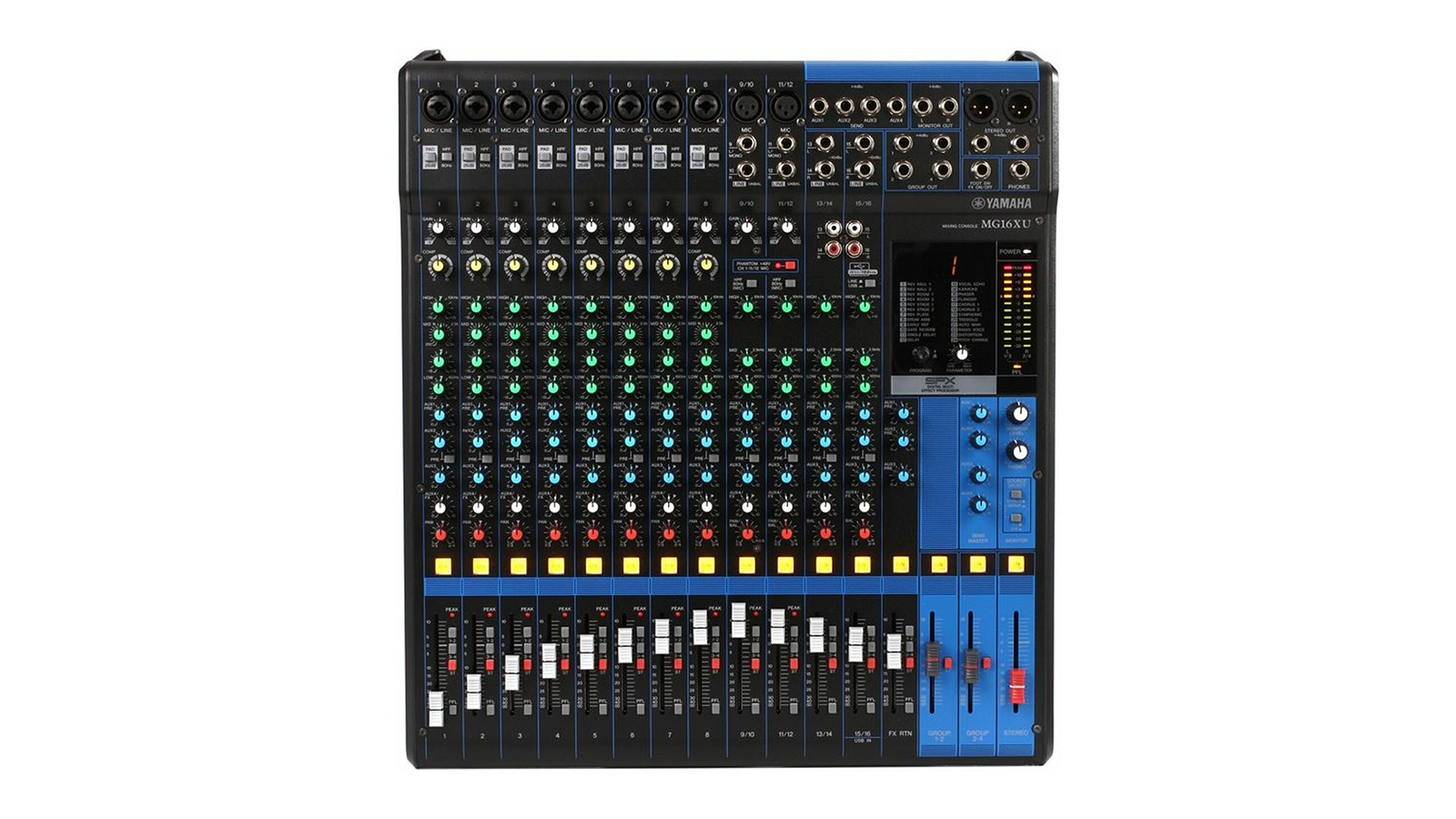
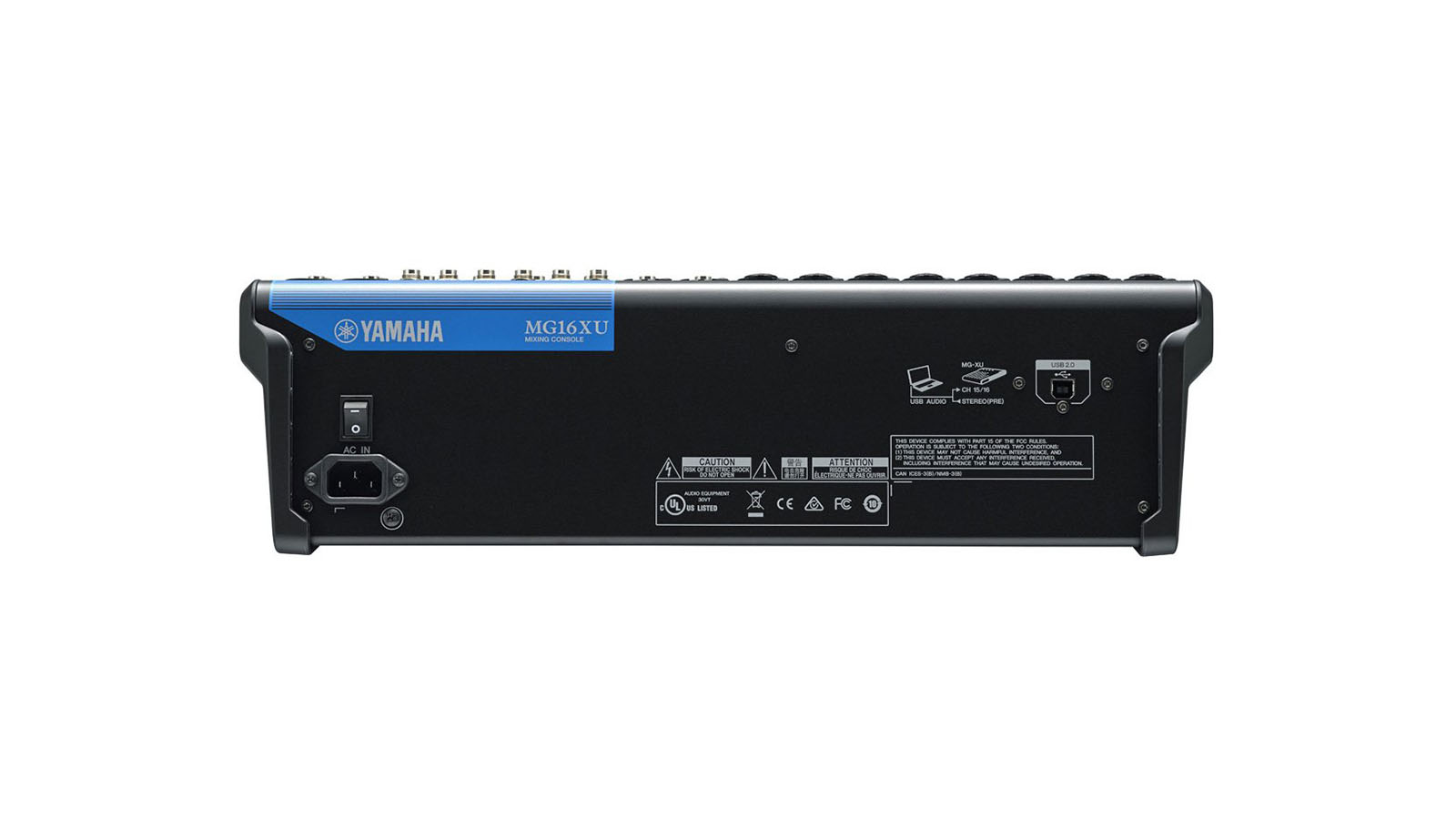
1. Yamaha MG16XU
Our expert review:
Specifications
Reasons to buy
Reasons to avoid
For studio recordings, there is a lot of emphasis put on the particular sound, or flavour, that a desk can impart. For live performance, the focus is more on providing a foundation for the instruments and singer to shine in their own right. The Yamaha MG16XU is the ideal choice, therefore, as a live mixing console as it promises complete transparency over your sound. 16 inputs mean you can connect up plenty of different sources, and there is a plethora of knobs for controlling EQ, effects and other settings.
We liked the MG16XU because it’s robust, well made and has included everything you’ll need for live performance. For studios there may be better options, but as a hub for your next live show this represents a solid choice.
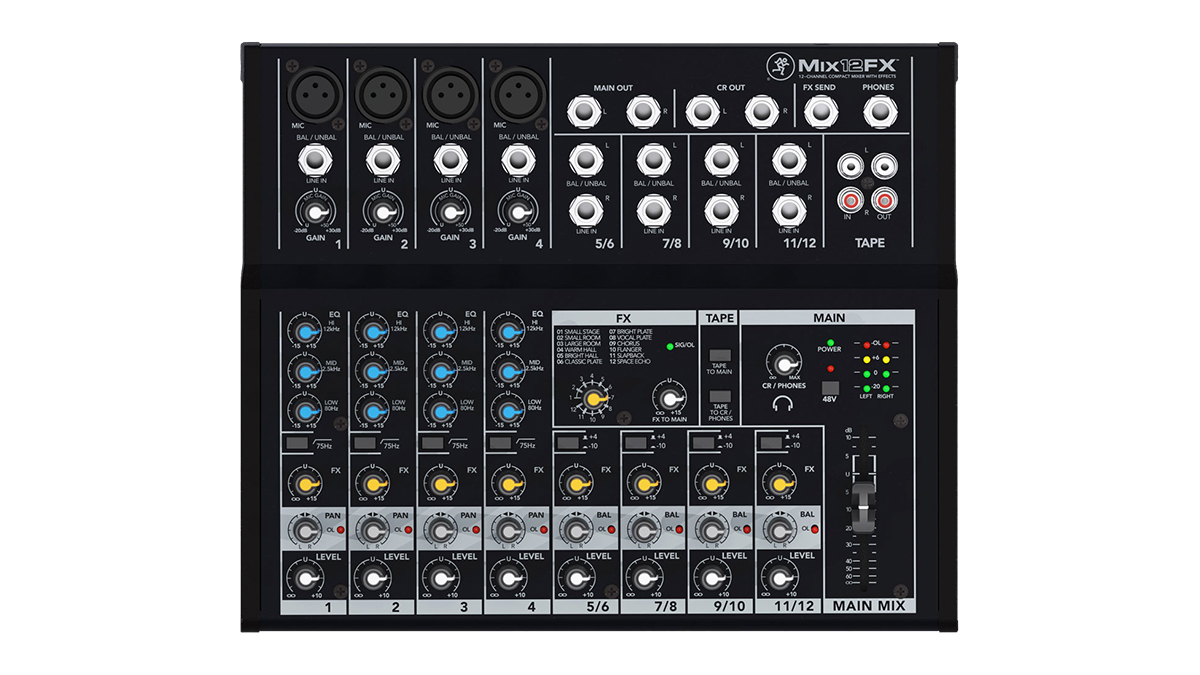

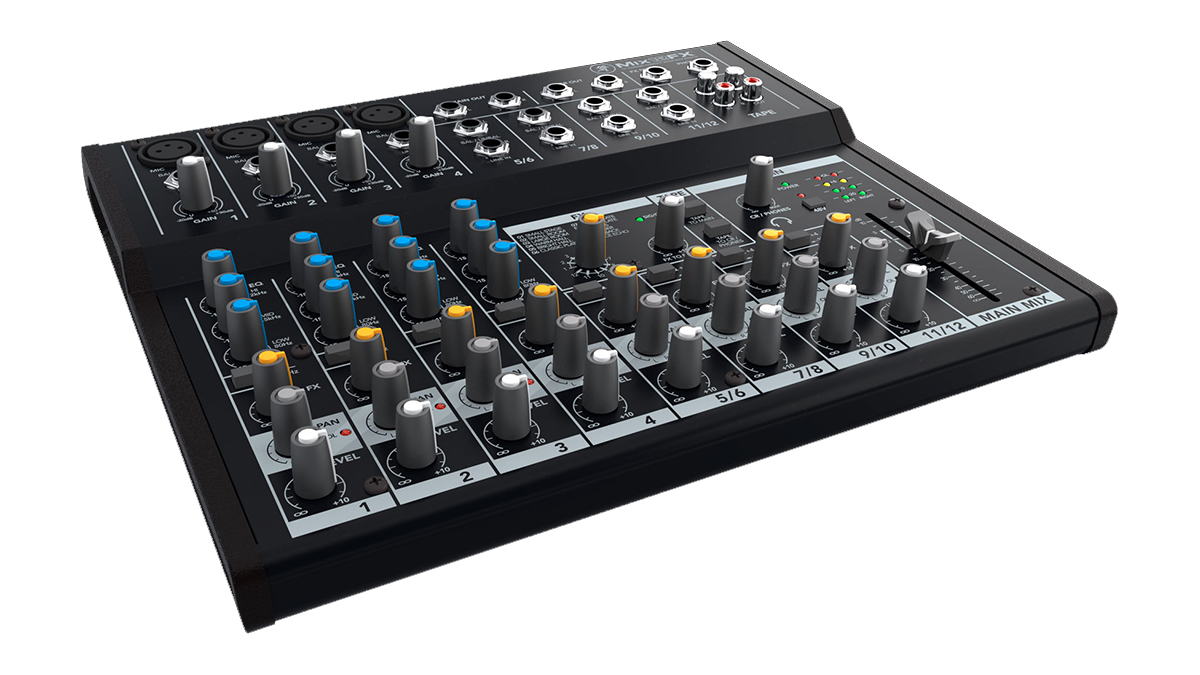
Specifications
Reasons to buy
Reasons to avoid
Mackie's Mix Series live mixer range is unashamedly affordable and primarily aimed at those situations where a convenient, low profile mixer is needed to blend together a few signals. You get 4 mic/line channel strips all with three-band EQ and 75Hz low cut filter, plus 8 further EQ-free stereo channels. There’s one mono post fader auxiliary send per channel strip (FX) hard-wired to the onboard FX processor - this has 12 ‘as is’ effects and a dedicated stereo return.
You also get independent Control Room and Phones outputs with shared level and 60mm channel and Main Mix faders, providing both visual and tactile feedback. With the Mackie stamp of quality, it should deliver reliable service for a number of years.
Read the full Mackie MX12FX review
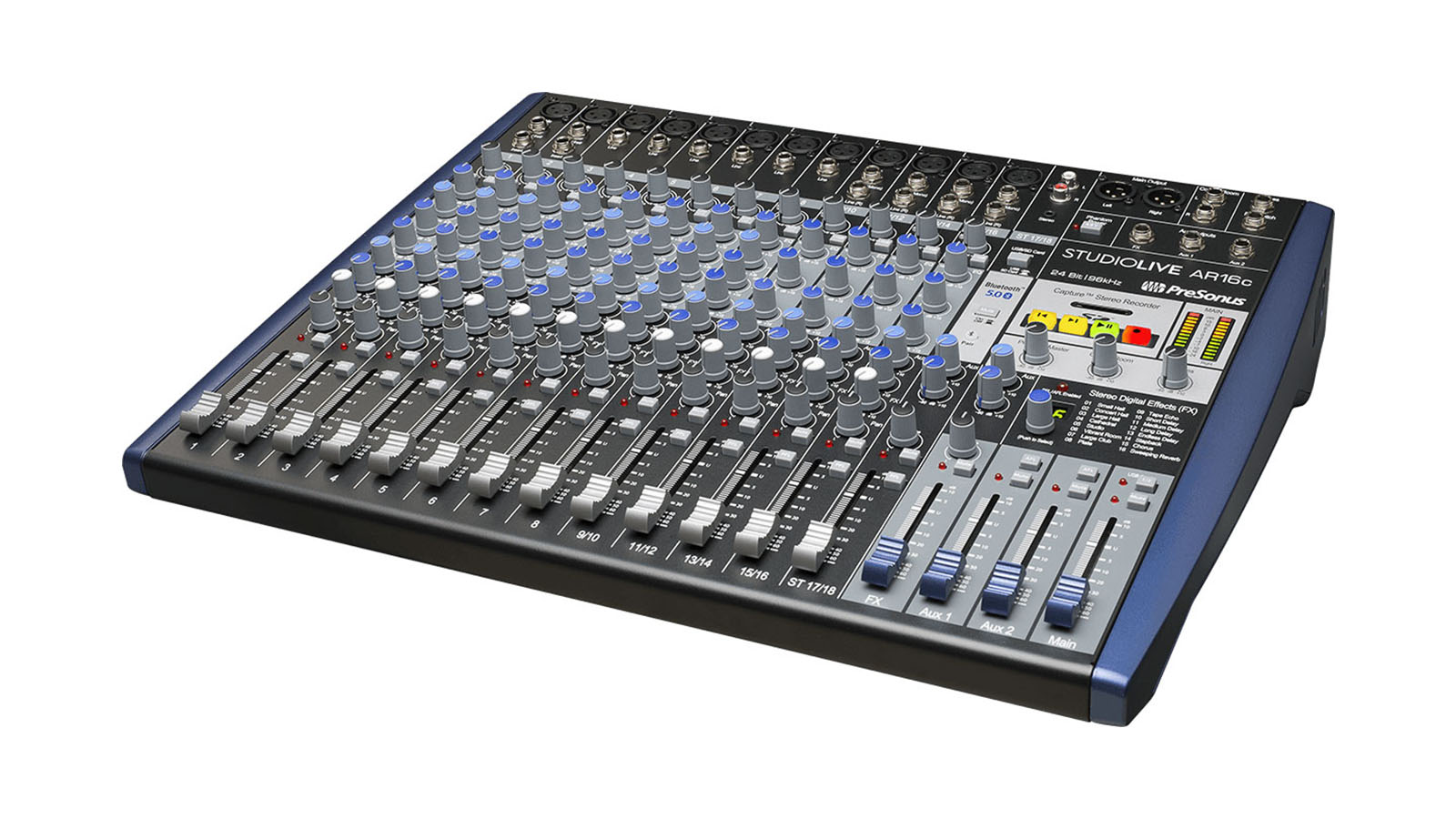
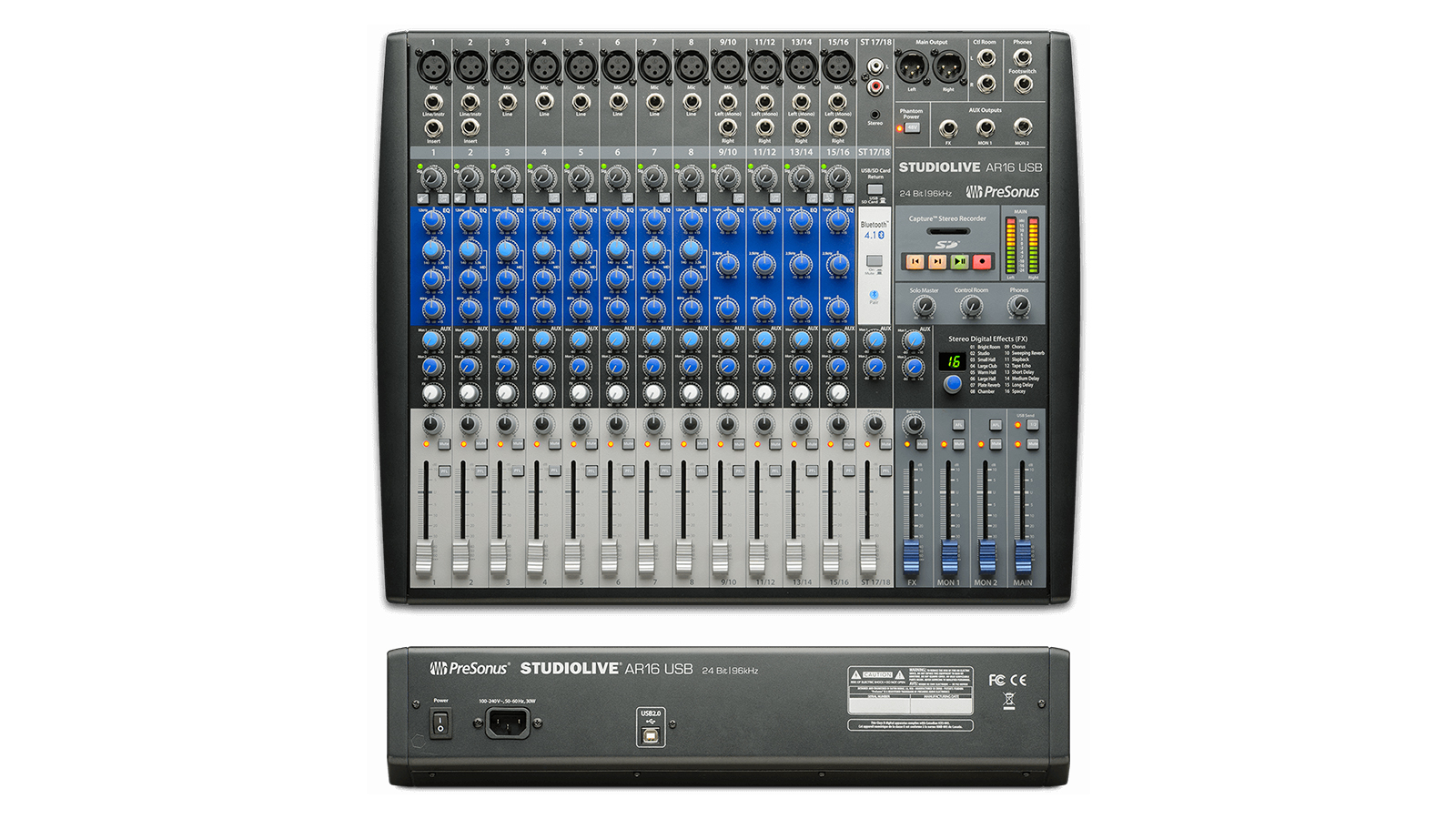
3. Presonus StudioLive AR16c
Our expert review:
Specifications
Reasons to buy
Reasons to avoid
While aimed at a studio user, the Presonus StudioLive AR16c features more than enough connectivity and control to enable it to double up as a live mixing console. With 16 analogue inputs there is more than enough for most bands, while the inclusion of Bluetooth 5.0 on the desks 17th and 18th channels allows you to stream back tracks directly from your phone.
What appeals most about the AR16c, however, is that it doubles up as an 18-in/4-out USB audio interface too, meaning you simply need to connect your laptop up and can record each individual track directly onto it. The option to record a summed stereo version to an SD card is a neat touch, making for a versatile, cost effective option for bands and venues.
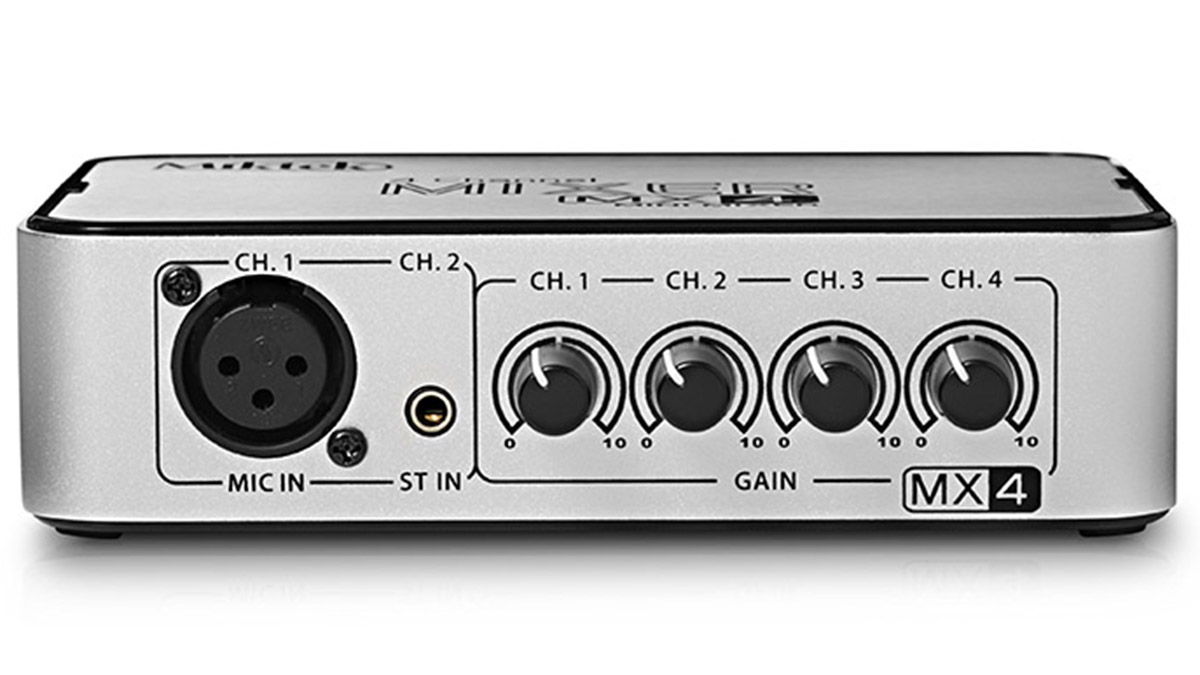
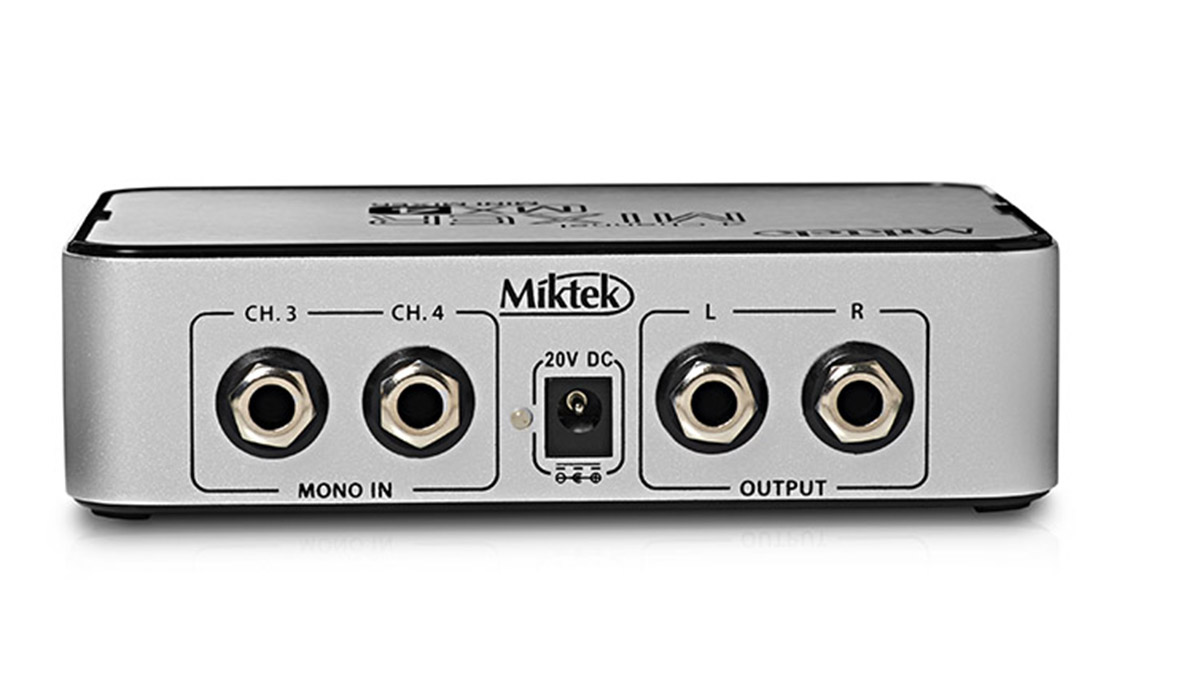
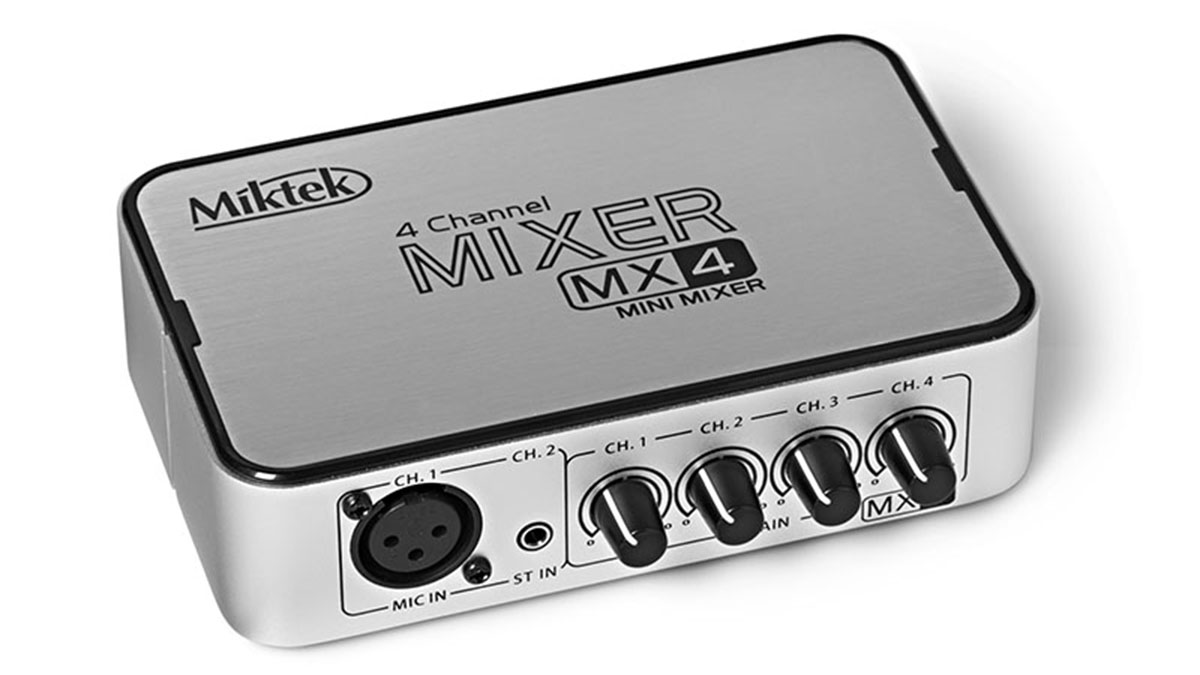
4. Miktek MX4
Our expert review:
Specifications
Reasons to buy
Reasons to avoid
For a truly pocket sized solution this compact 4 in 2 out mixer combines two 1/4” instrument impedance inputs (numbered 3 and 4) with a mini jack stereo input (2) and rather unusually a phantom powered XLR mic input (1). Gain is set using 4 small rotary controls and the output is via two unbalanced 1/4” jacks with overall unit power coming from an 18V external PSU.
Phantom power is in an ‘always on’ state, which isn’t ideal but should be fine for most modern condenser and dynamic mics. The MX4 is very much a case of what you see is what you get, but if you’re simply trying to combine the particular analogue inputs it handles and don’t want interfacing or processing, it’s a very affordable option.
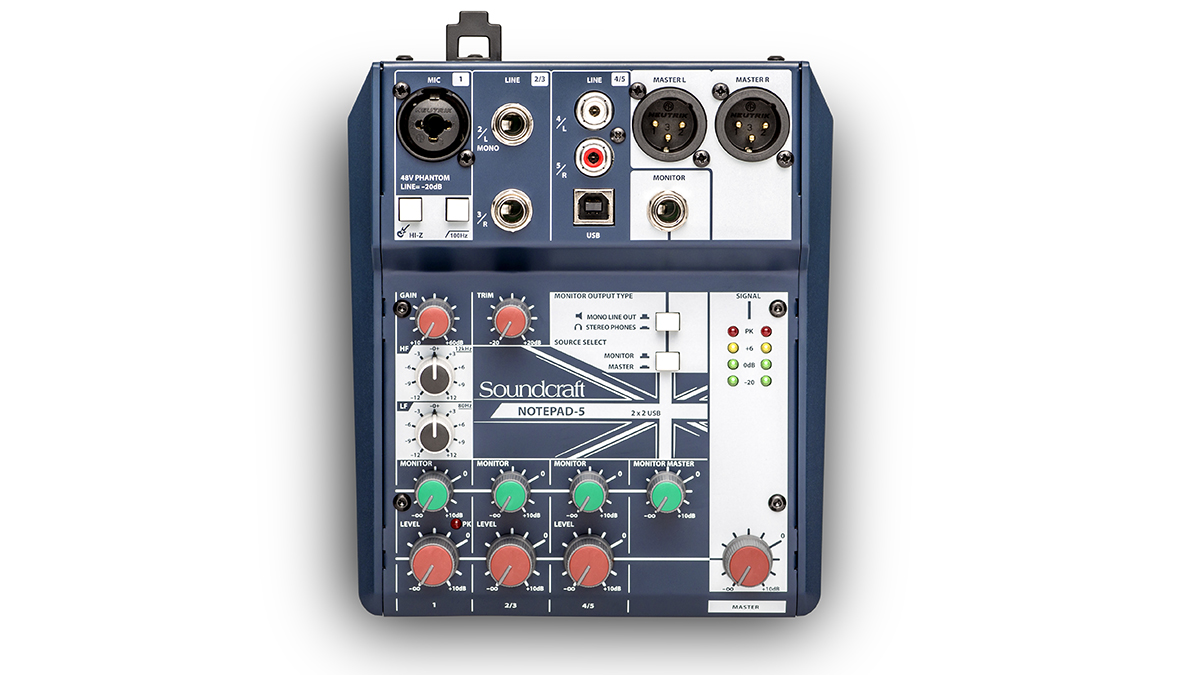
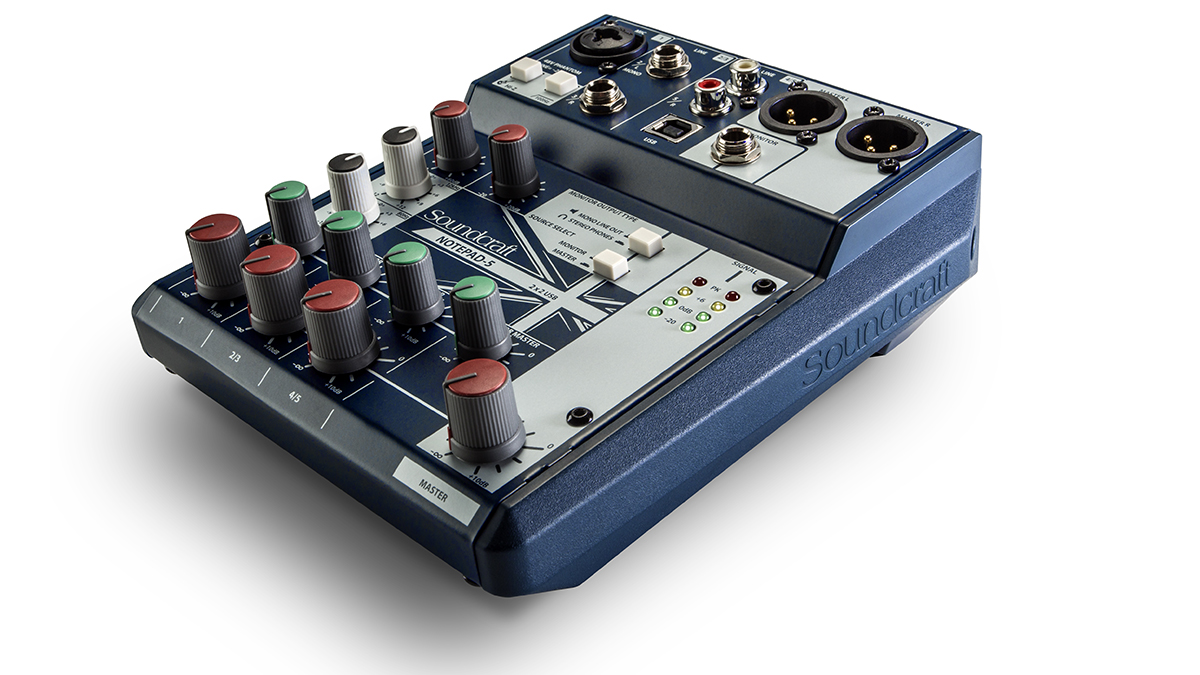
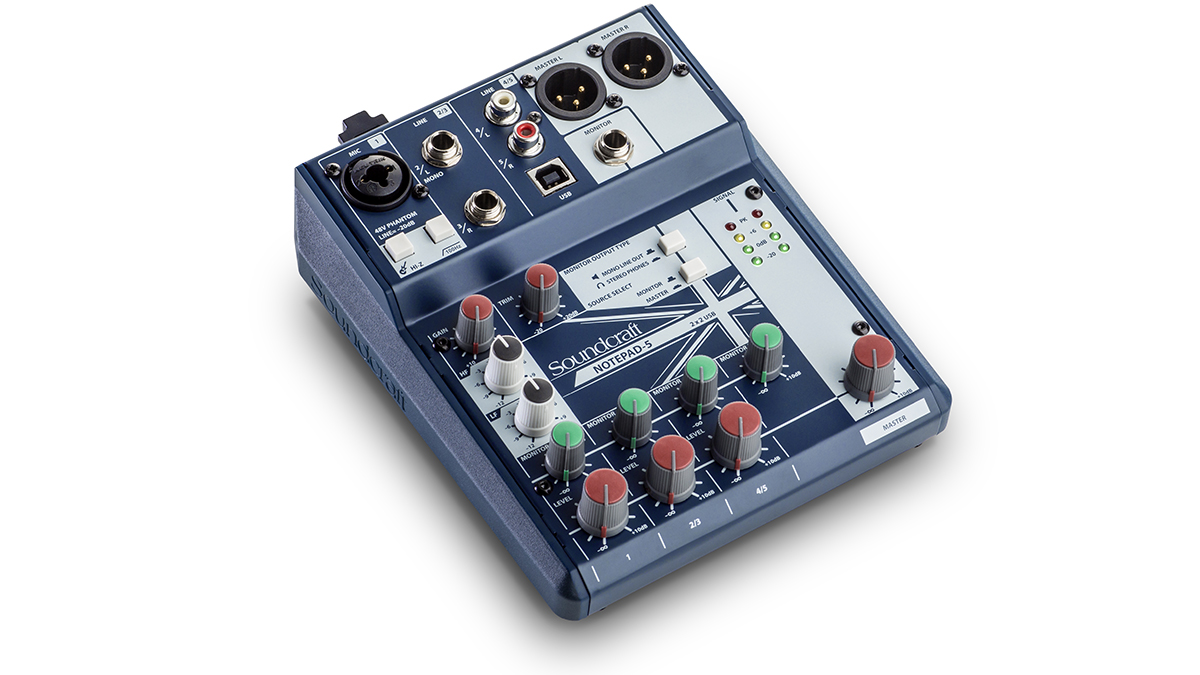
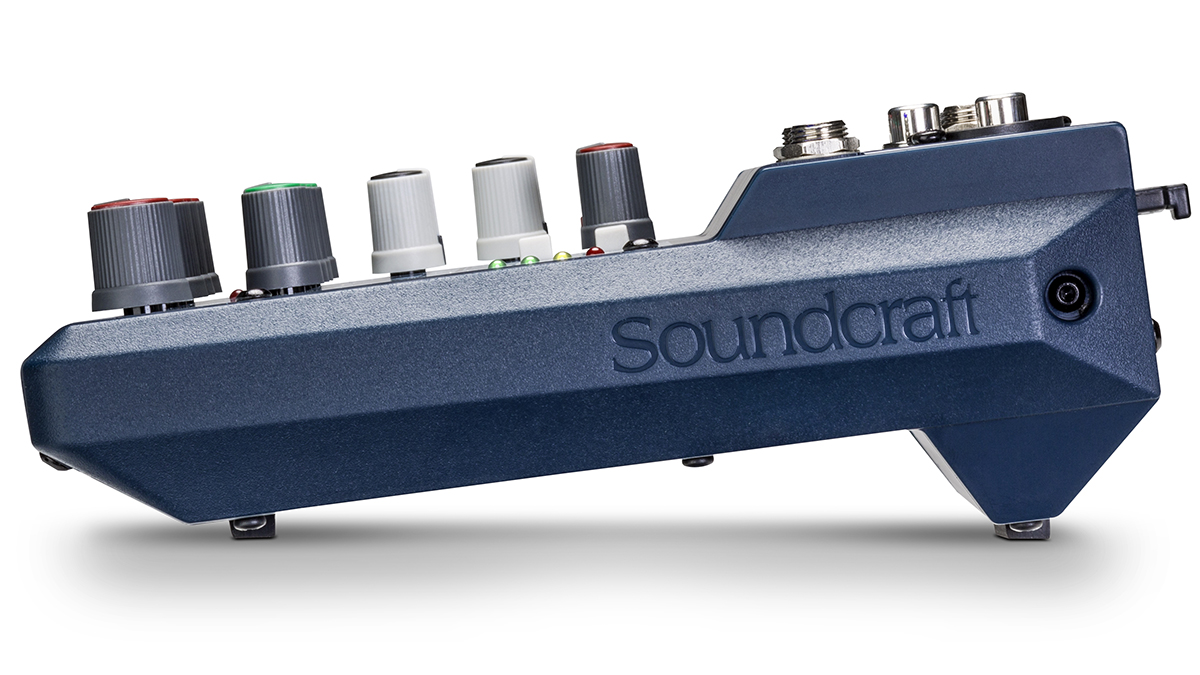
5. Soundcraft Notepad-5
Our expert review:
Specifications
Reasons to buy
Reasons to avoid
Soundcraft’s Notepad-5 is a simple ultra compact desk and the smallest in their Notepad range. Its 5 inputs are arranged as one mono mic/line/instrument channel and two stereo channels (one line level with 1/4” jack inputs and one line level with phono inputs). The mono input features a quality Soundcraft preamp alongside basic 2-band EQ, low cut filter, Hi-Z switch and peak level meter. Each channel also includes a dedicated monitor level. This feeds a single jack output with level control that can be switched between stereo for headphone use and mono for stage monitor use.
The main outputs include 2-channel LED metering and level knob, and outputs are on XLR, with a USB connector providing two track input to DAW. Notepad-5 is basic but well made and offers great value for money.
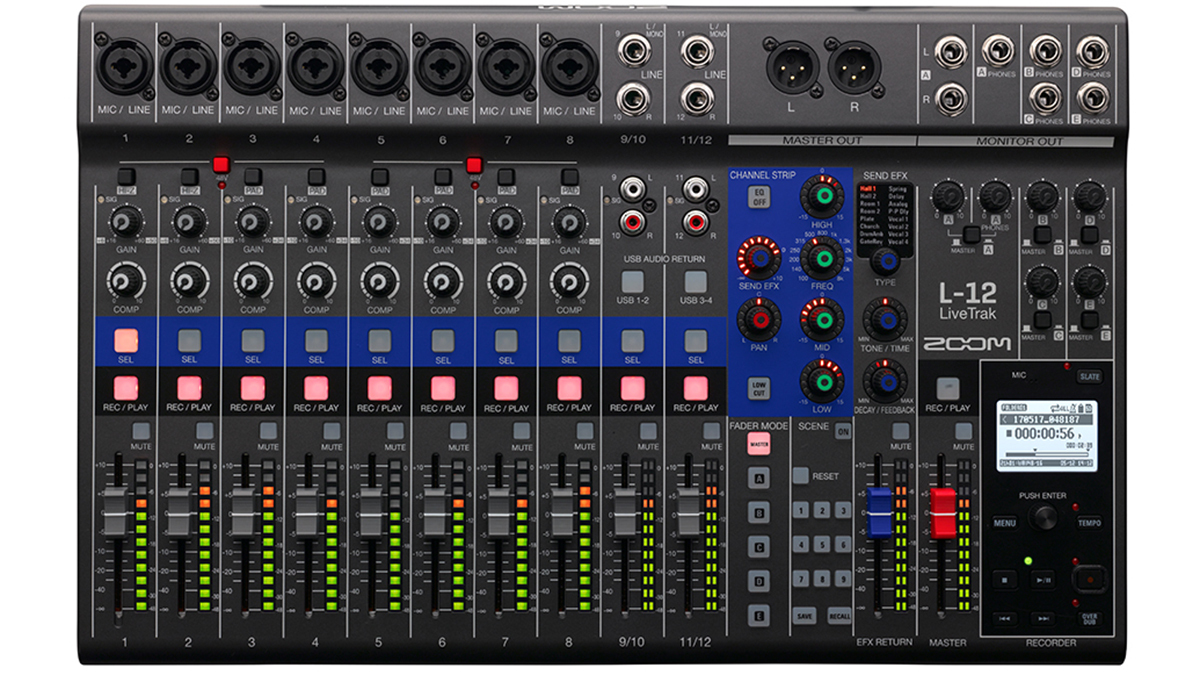
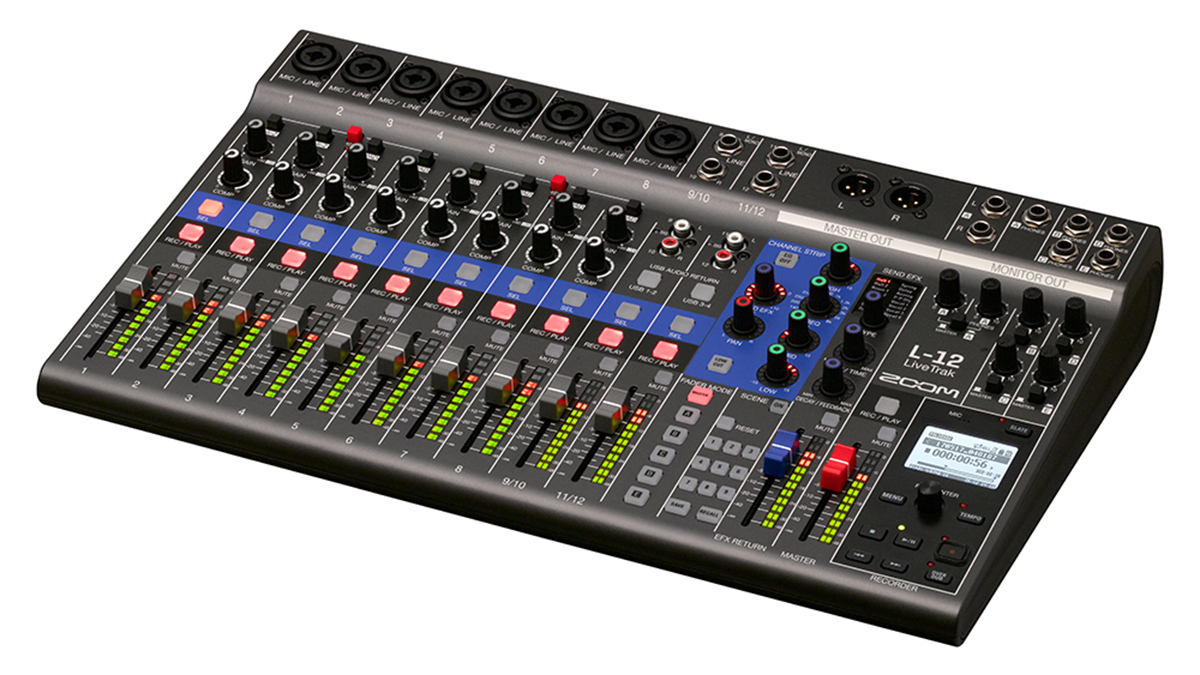
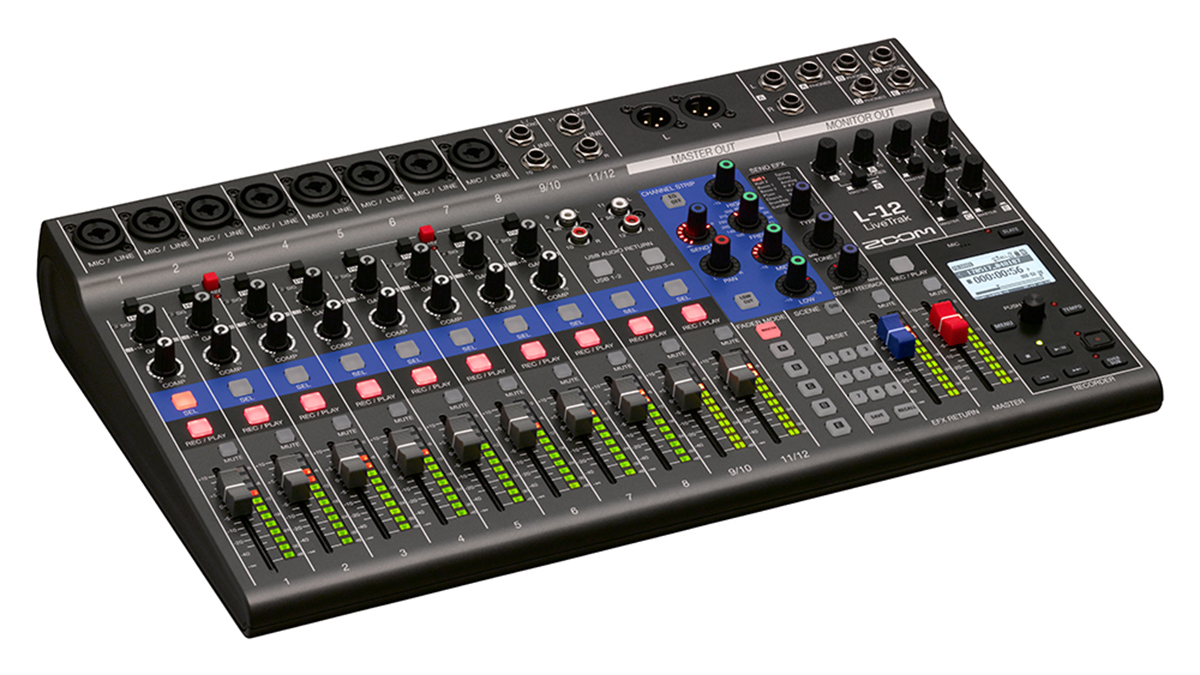
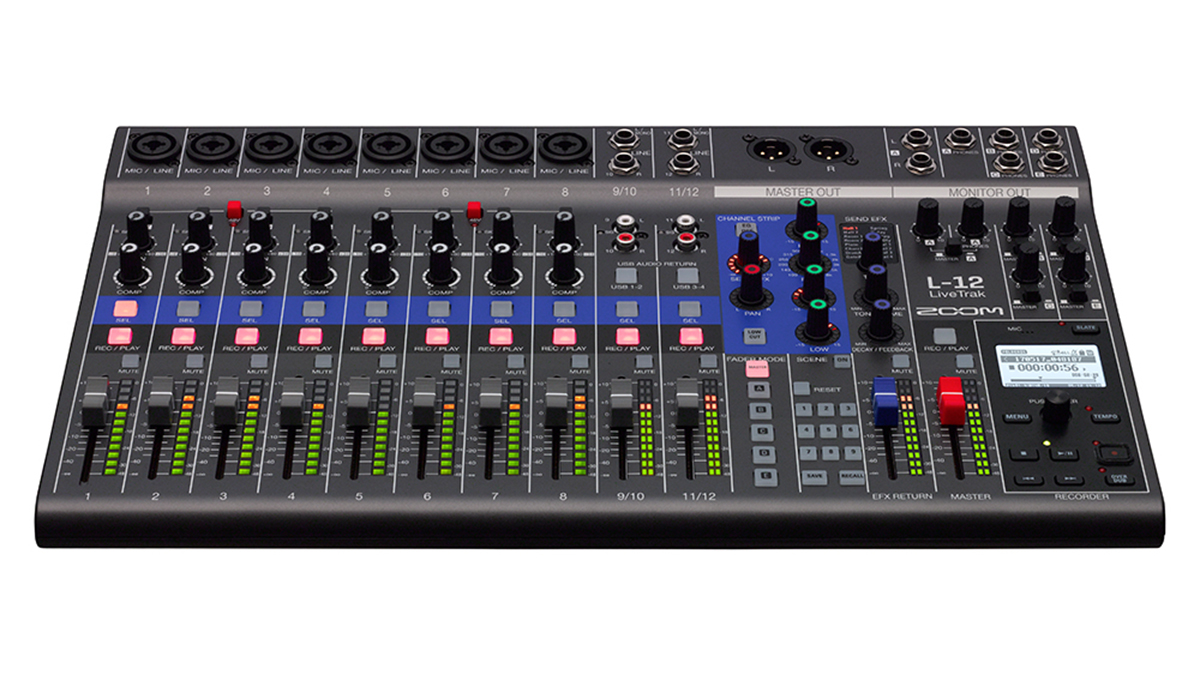
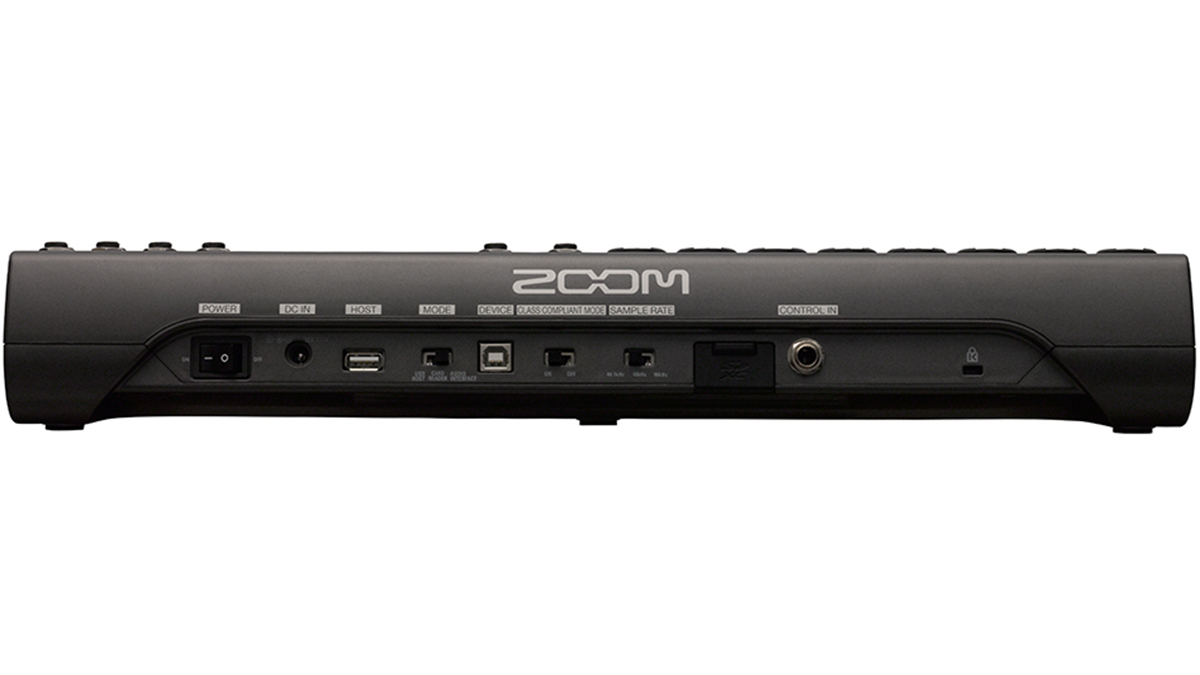
6. Zoom LiveTrak L-12
Our expert review:
Specifications
Reasons to buy
Reasons to avoid
Zoom’s LiveTrak L-12 is a compact digital desk that can blend 8 mono mic/line inputs (inputs 1 and 2 are also Hi-Z instrument compatible) and 2 stereo signals, adding EQ, effects and dynamics. 5 separate powered headphone outputs keep multiple performers happy while onboard SD recording at up to 24 bit 96kHz and integrated metronome also make it a self-contained recording solution.
Channels have plenty of physical controls, with EQ and panning accessed by a centralized Channel Strip panel. There’s also one hardwired FX bus with 16 editable effects. Audio interface mode turns the L-12 into a 14 in / 4 out USB interface although here maximum sampling rate is 48kHz. Overall the L-12 is fantastic compact and feature rich digital desk.
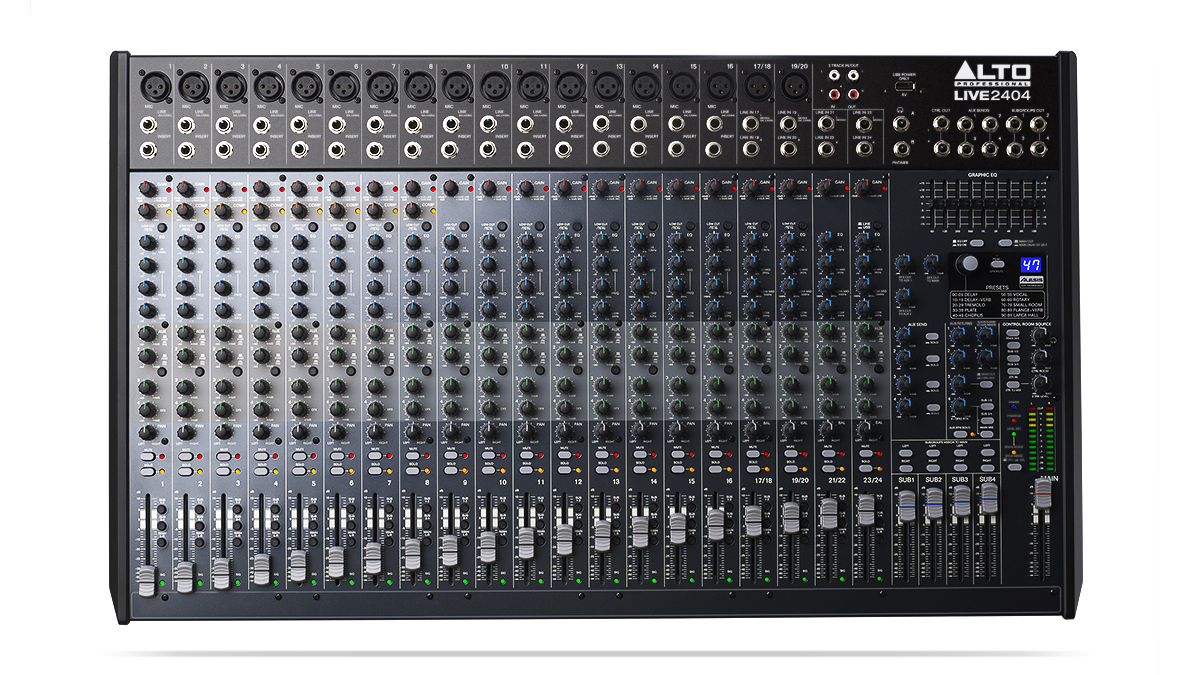
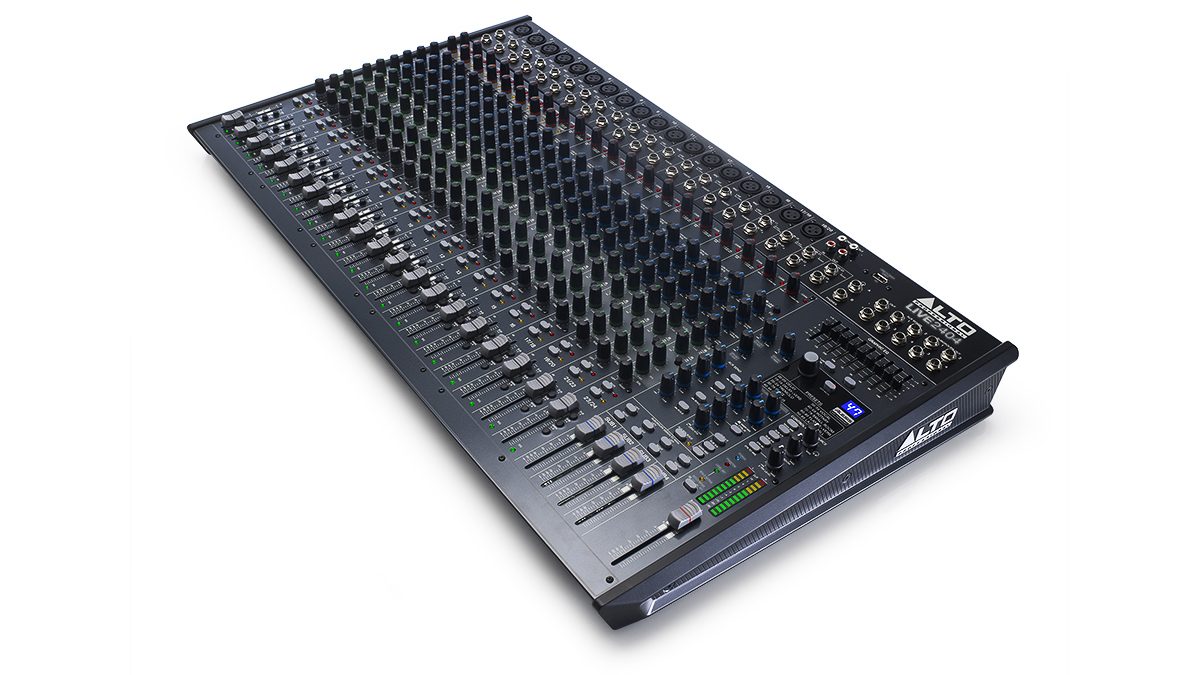
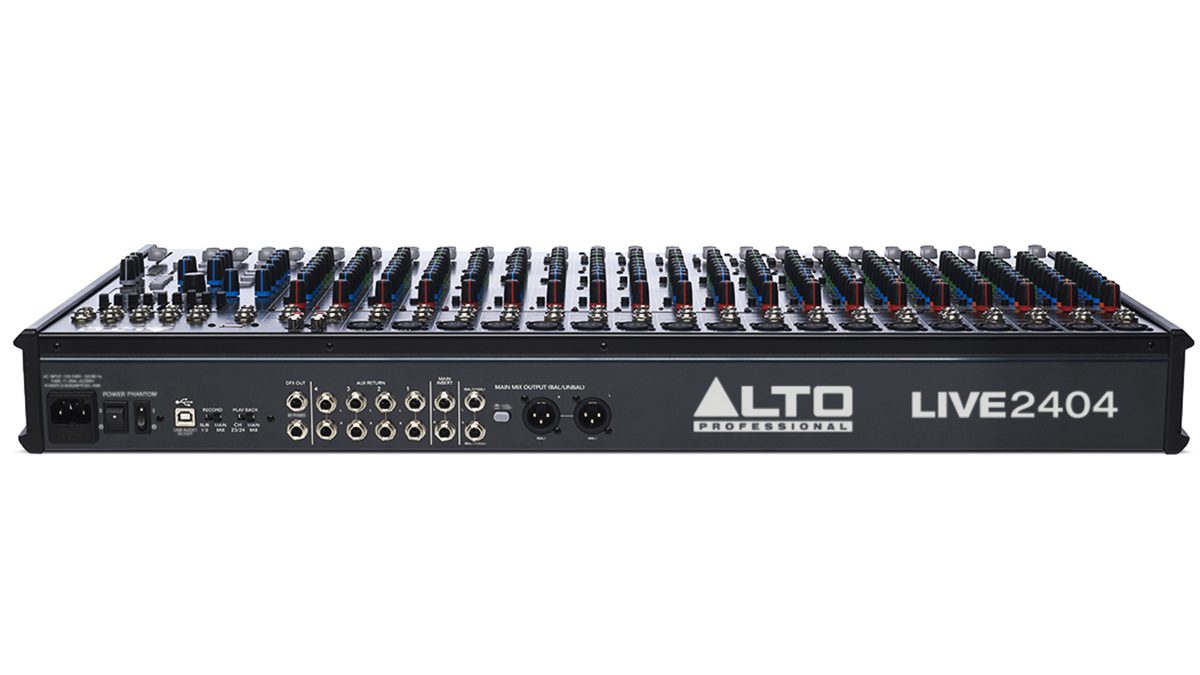
7. Alto Live 2404
Our expert review:
Specifications
Reasons to buy
Reasons to avoid
The largest desk from Alto’s traditional analogue Live range gives you 24 inputs (16 mono and 4 stereo) including 18 of their DNA mic preamps, plus 4 group outputs and main output. Each channel includes 3 band EQ, 4 auxiliaries (the first two can be pre/post fader) and the first 8 channels also get single knob compression. There are also 100 onboard effects courtesy of Alesis and an integrated Graphic EQ on main output.
One fader per channel familiarity makes it a cinch to use and stereo USB connectivity means you can interface a stereo mix directly too and from your DAW. Much like the smallest 802 mixer (review link below), the Live 2404 is feature packed and excellent value.
Read the full Alto Live 2404 review
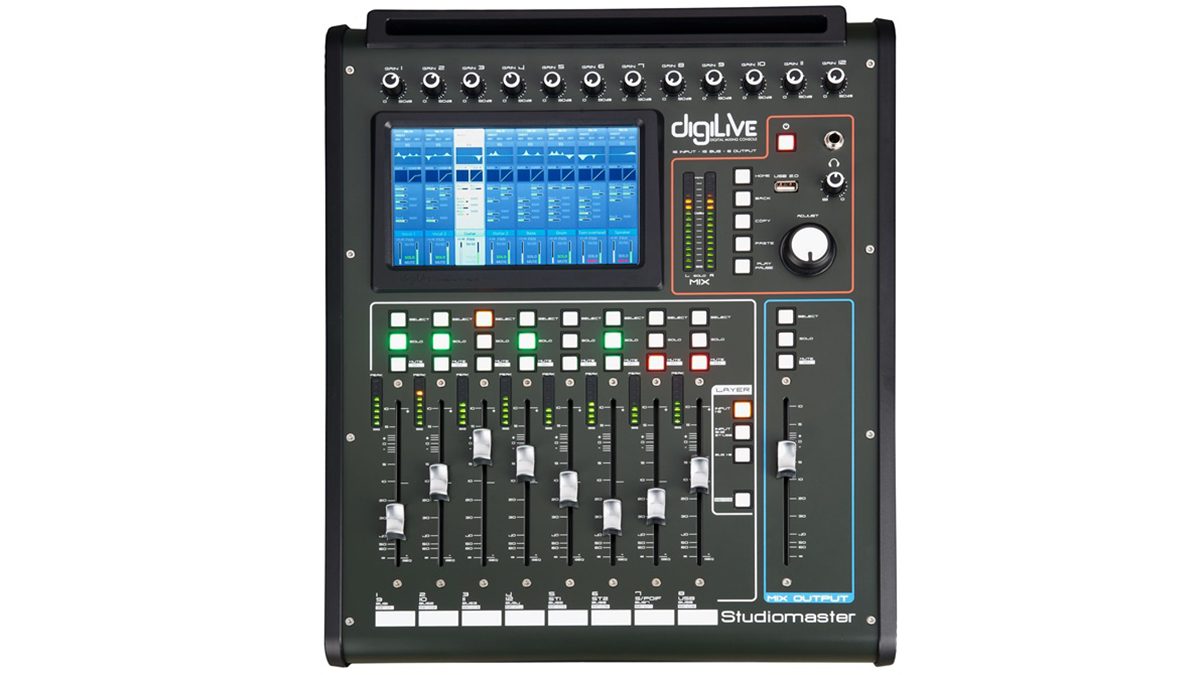
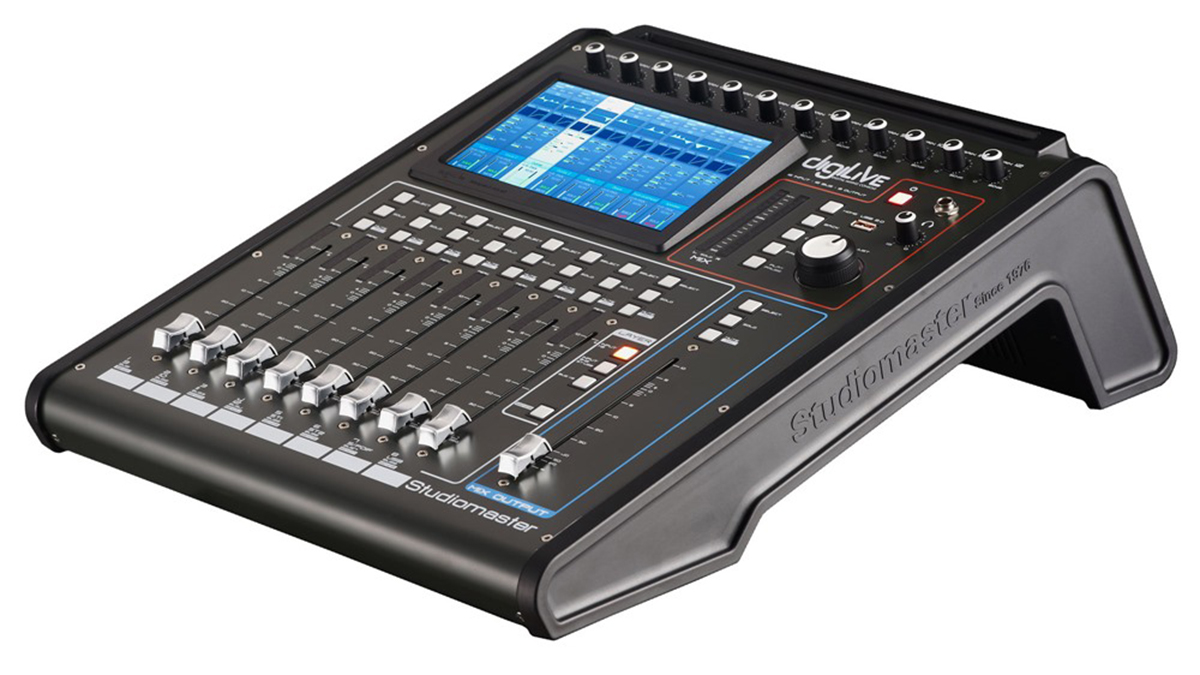
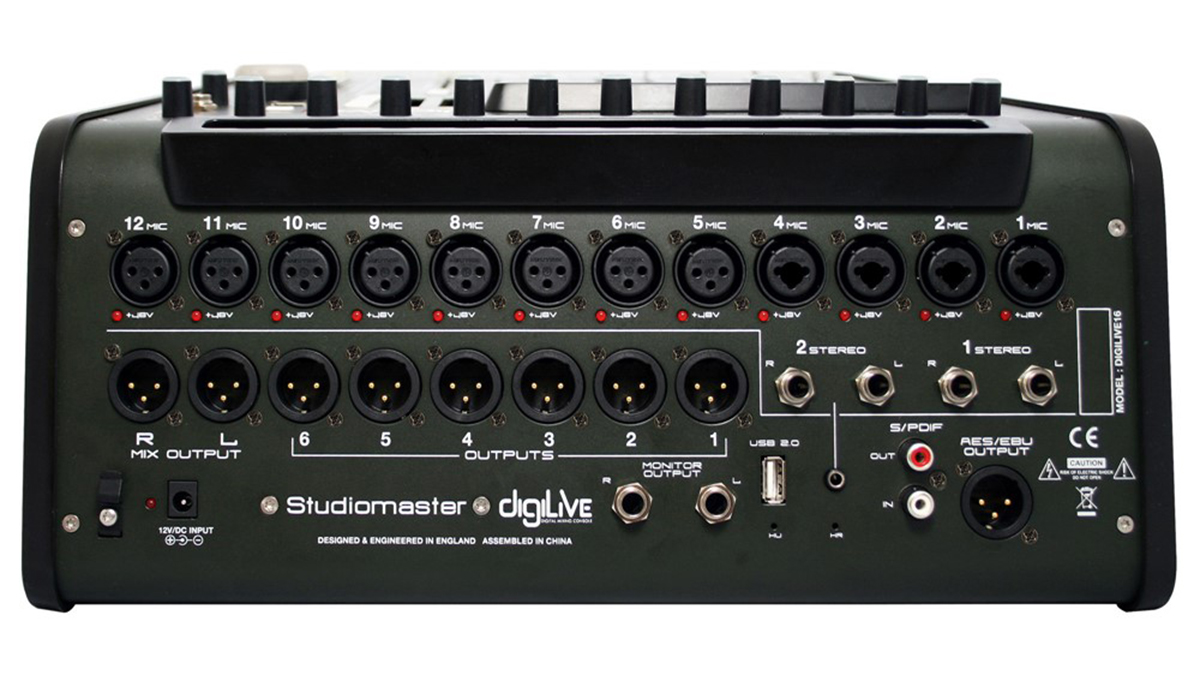
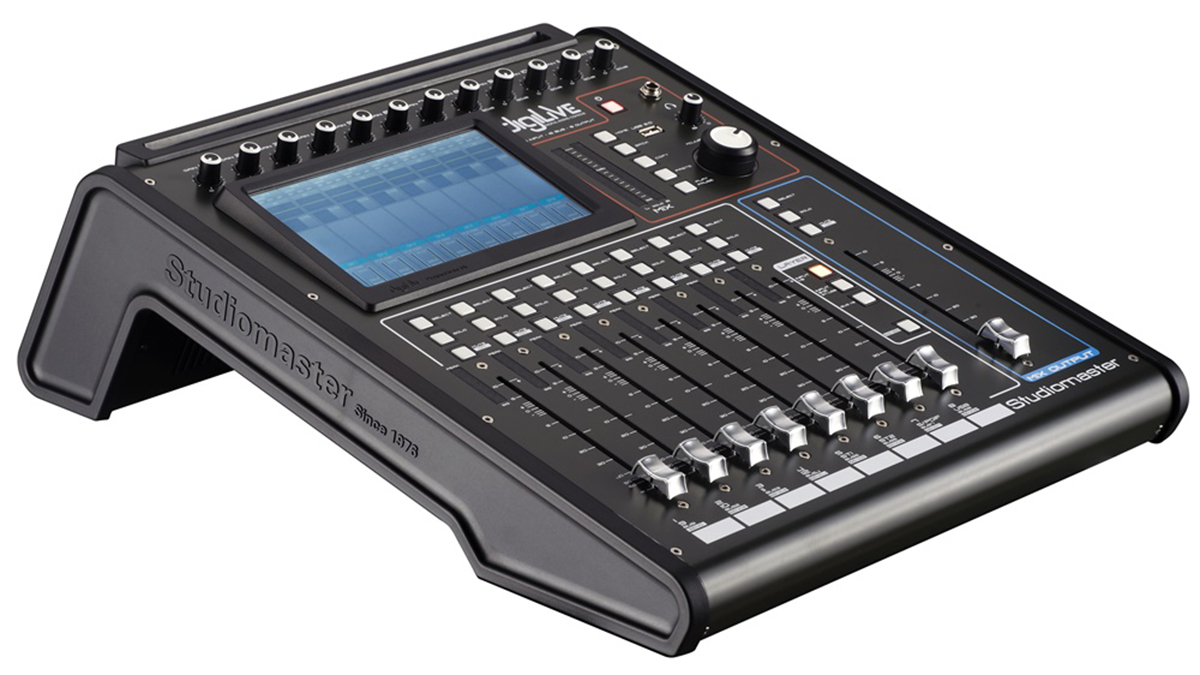
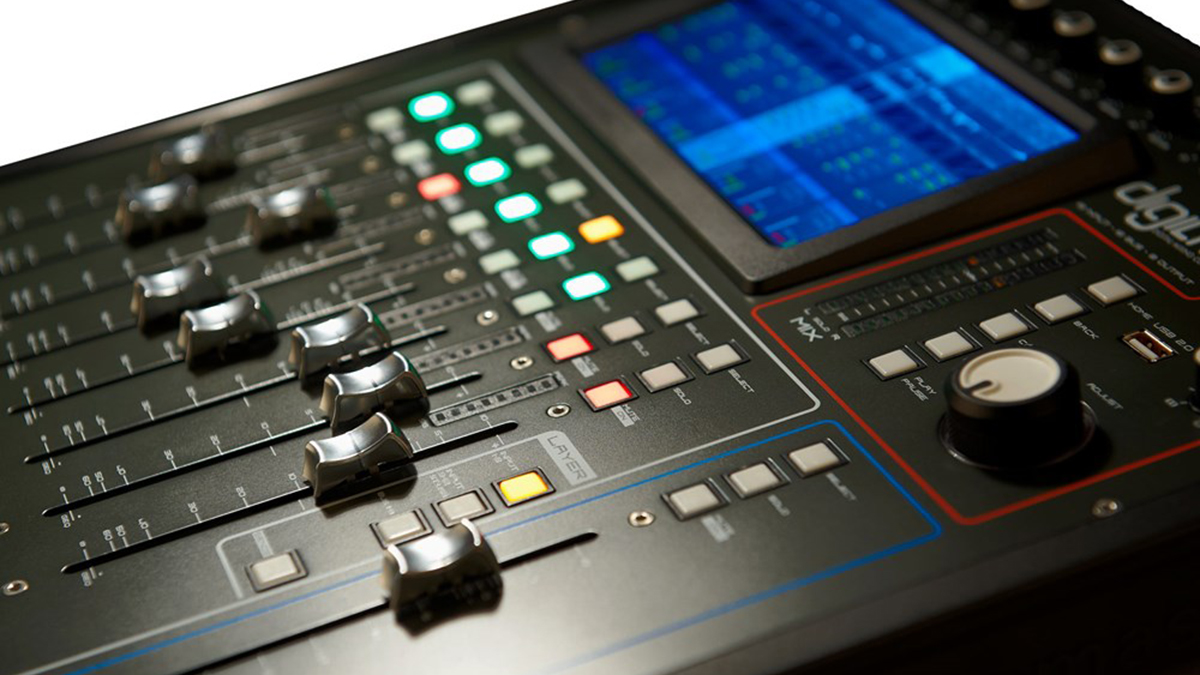
8. Studiomaster DigiLive 16
Our expert review:
Specifications
Reasons to buy
Reasons to avoid
With both Wi-fi remote and front panel operation, this 16 input 16 bus mid priced digital desk is ideal for small live and performance setups. You get 12 mic inputs, the first 4 of which use combi connectors. You also get two further stereo input pairs on 4 TRS jacks, with one pair also on mini jack format. On the output side 6 assignable outputs join the stereo main and monitor outputs, with a single headphone on the top panel.
Processing parameters and routing are handled via the 7” touch screen, however you’ve also got physical input gain knobs, input metering and 9 motorised 100mm faders (8 channel and 1 master) which means the desk retains some traditional feel. Onboard SHARC based DSP powers 8 effects processors and although there’s no multichannel USB DAW interfacing, a USB drive can be connected to save settings and record the stereo output.

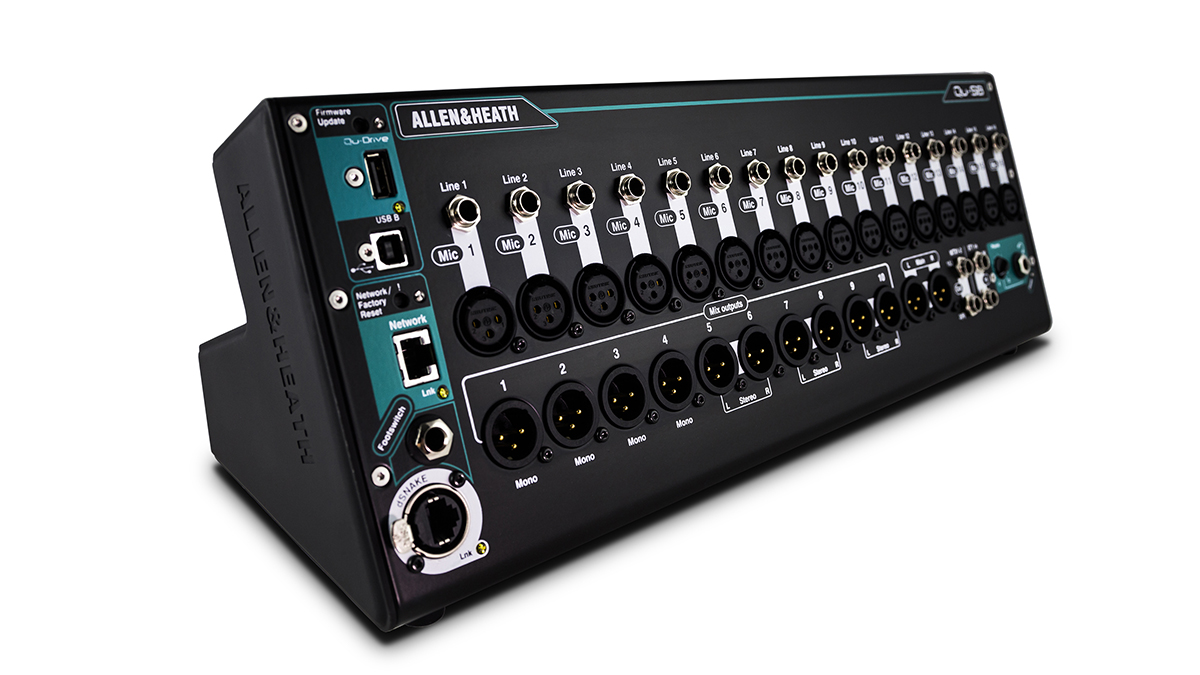
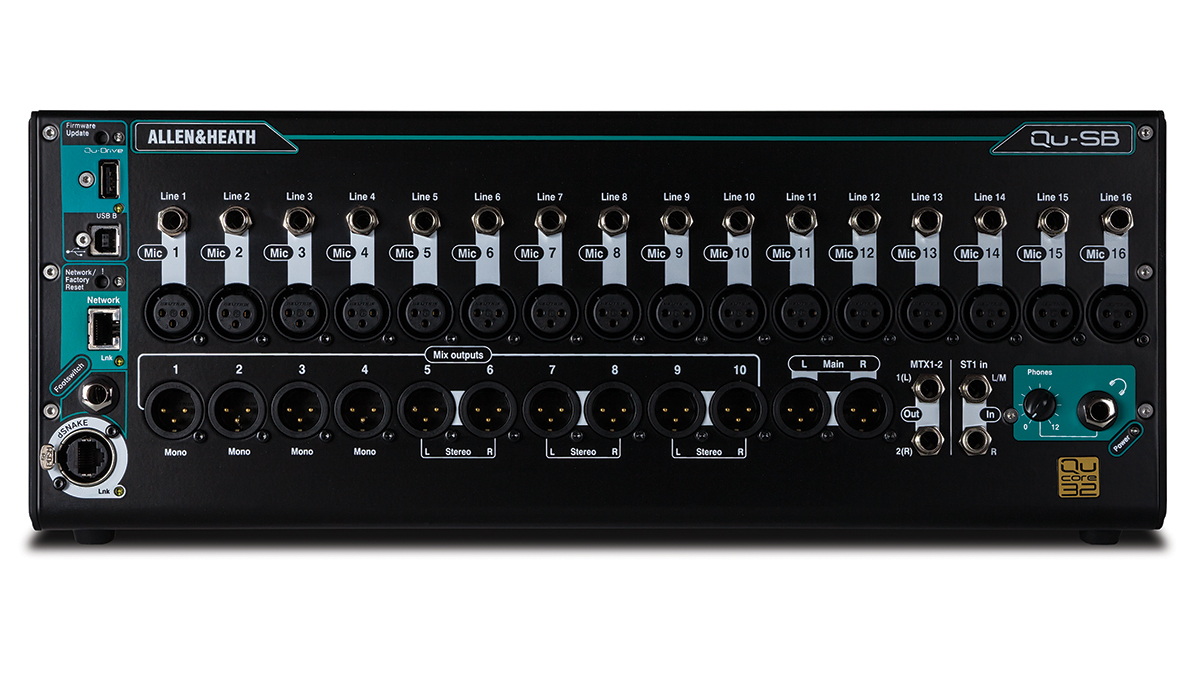
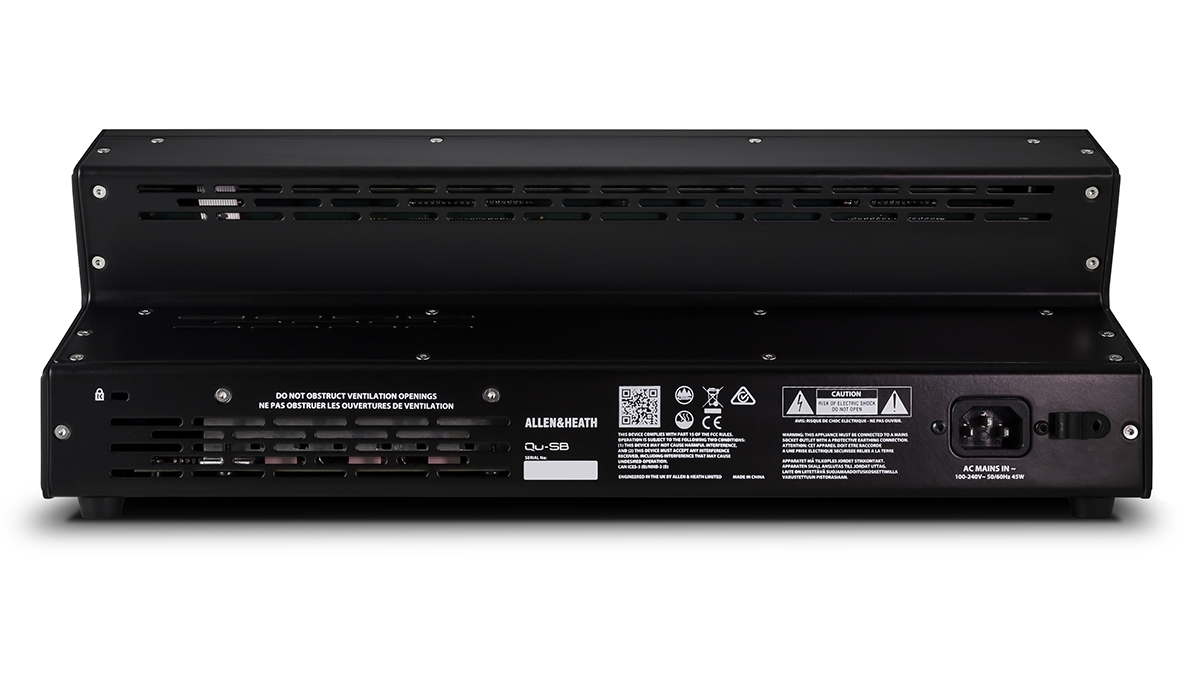
Specifications
Reasons to buy
Reasons to avoid
Qu-SB is a portable rackmount digital mixer with 18 inputs (16 mic/line, two line), 14 outputs (12 XLR, two TRS) and one headphone output. Allen & Heath’s dSnake equipped AudioRacks can extend the connectivity further (potentially 38 ins, 24 outs) and it’s compatible with their ME Personal Mixing System. Mixer control is app based via iPad only (you’ll need to hook up your own Wi-Fi router). The main mixer app (Qu-Pad) is joined by apps for musician monitoring (Qu-You) and levels only (Qu-Control).
Onboard processing includes EQ, dynamics and ducking on all inputs, and EQ and dynamics across all outputs. Meanwhile four dedicated FX busses access four independent FX engines. Qu-SB supports 32 channels of DAW I/O via USB 2.0, but also includes onboard multi-track recording to USB stick, supporting up to 18 tracks at 48kHz 24-bit. All told the Qu-SB is an excellent and scalable device, with some great options and impressive iOS apps.
Read the full Allen & Heath QU-SB review
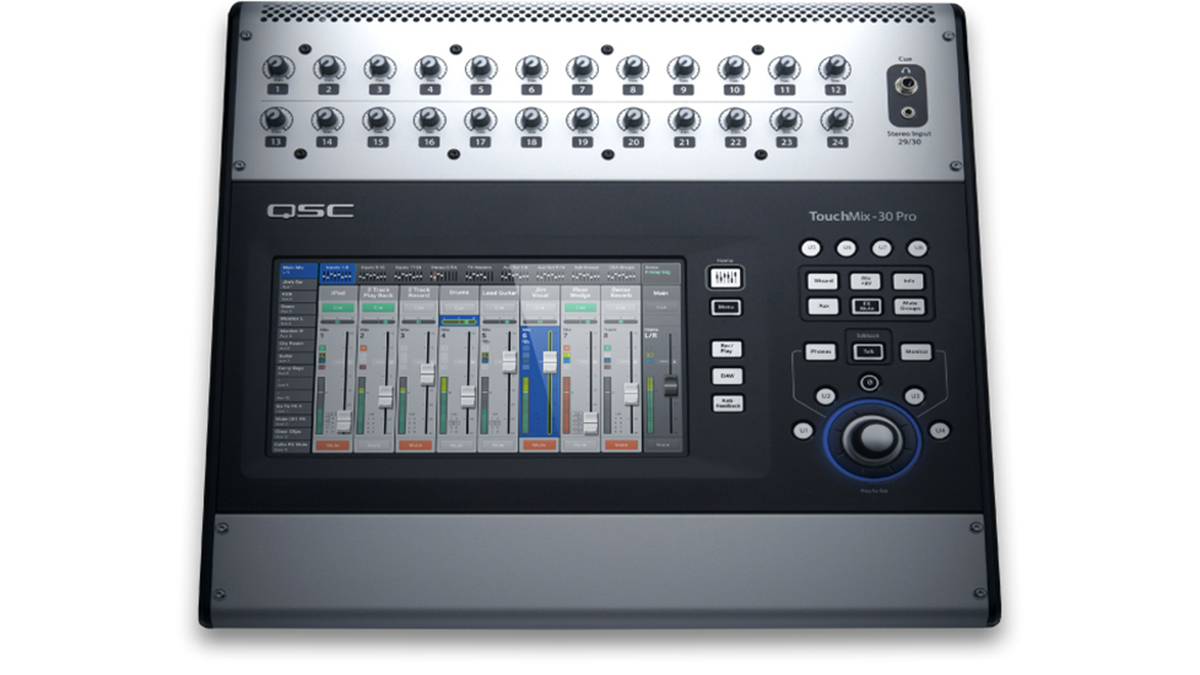
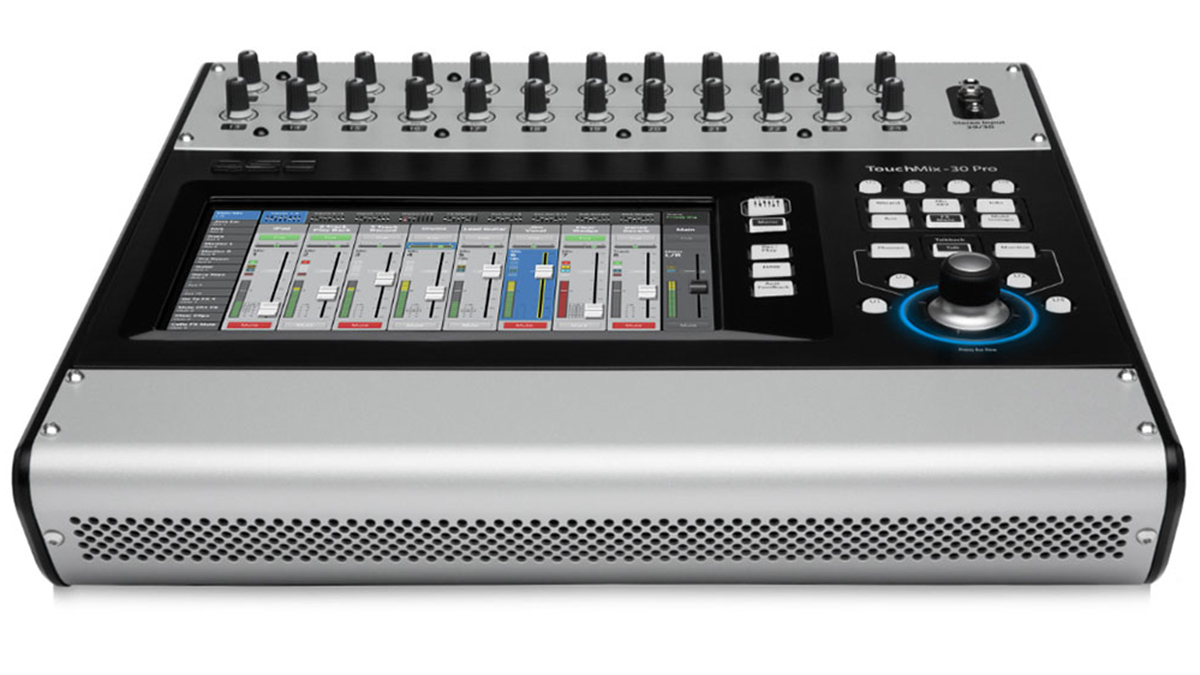
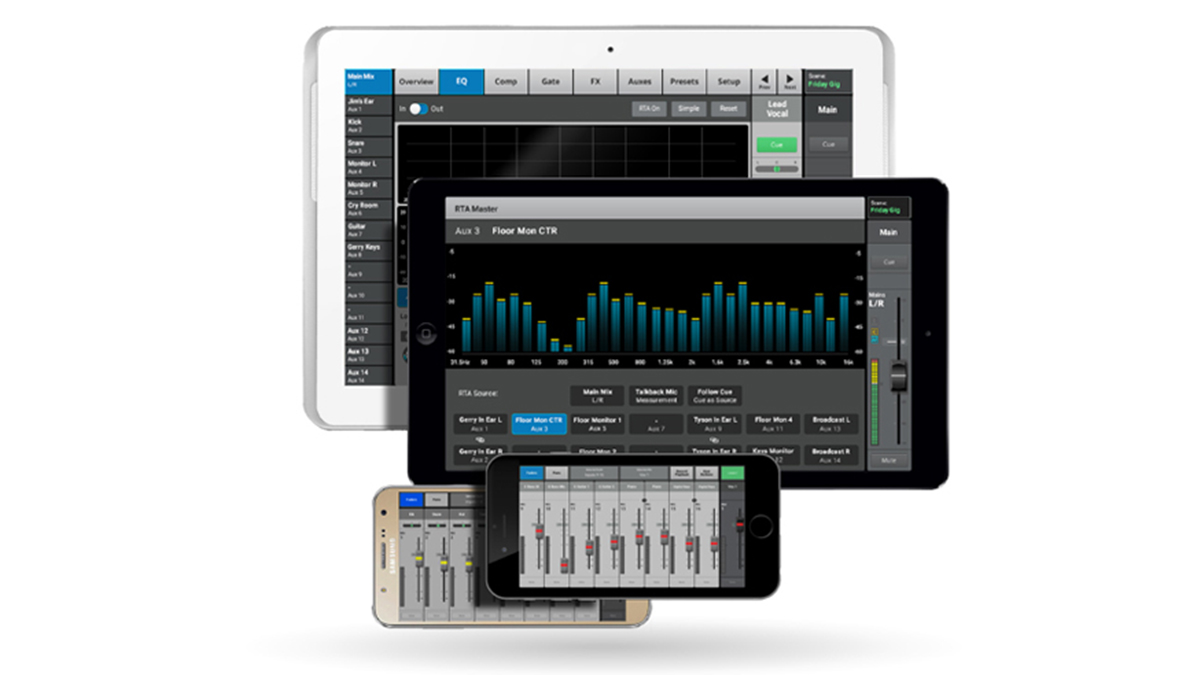
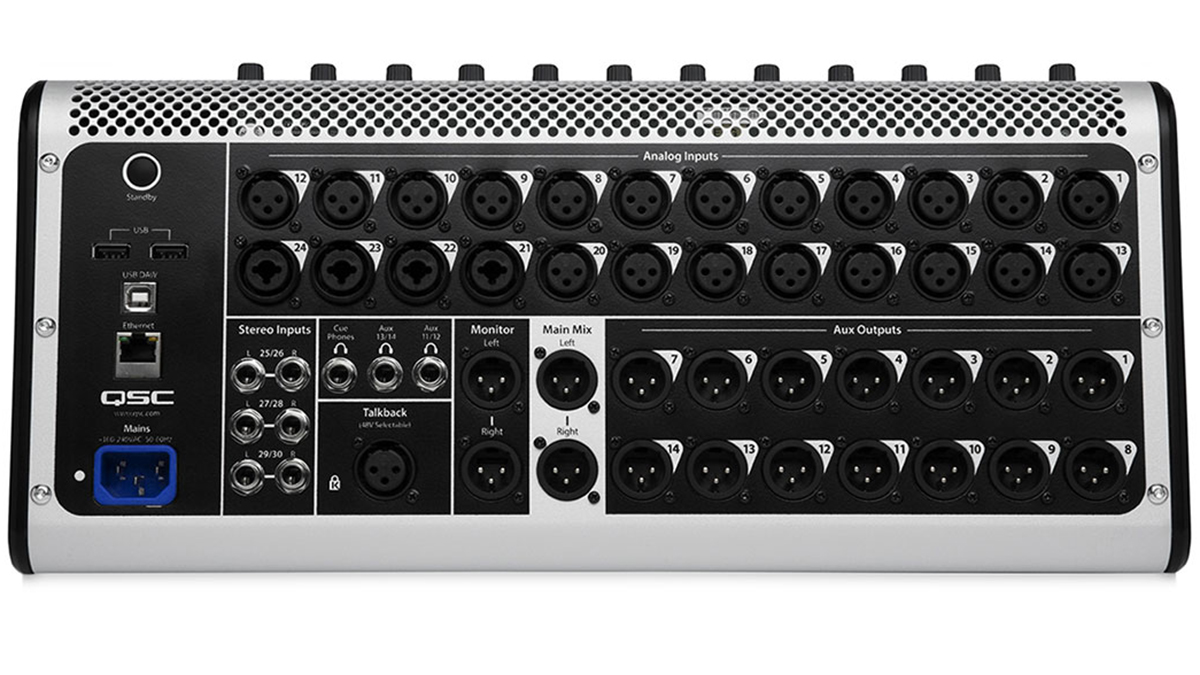
10. QSC TouchMix 30 Pro
Our expert review:
Specifications
Reasons to buy
Reasons to avoid
The largest of QSC’s Touchmix series (there’s an 8 and 16 channel version too) kicks it out of the park with 24 mic inputs, 16 outputs, 8 sub groups and 32 mixing channels all in a compact standard digital desk format. On board processing includes 4-band EQ and dynamics on all input channels, 6-band EQ and limiter on all outputs, six multi-effects engines and ‘wizard’ style processors for anti feedback and room tuning.
Most settings including faders are handled via the integrated 10” touchscreen and remote control is also possible using the TouchMix app for iOS and Android. 32 channel direct to drive recording is available via the onboard USB, as is 32 channel DAW I/O. All told the TouchMix 30 delivers a lot of mixer for your money.

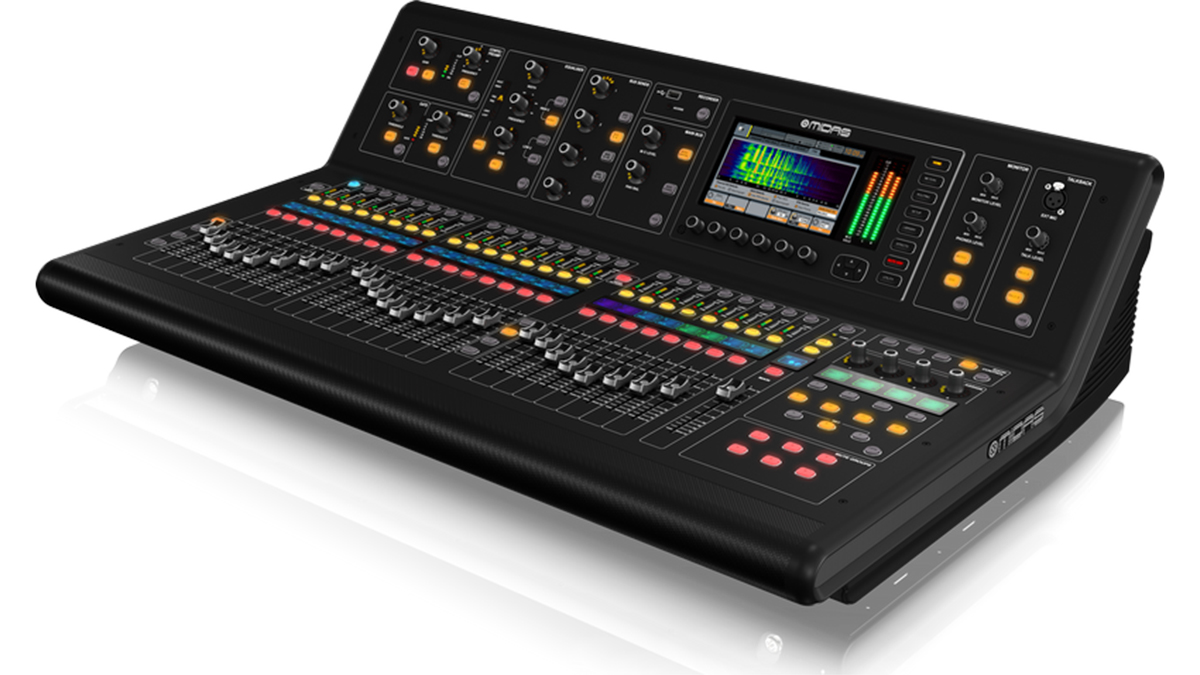
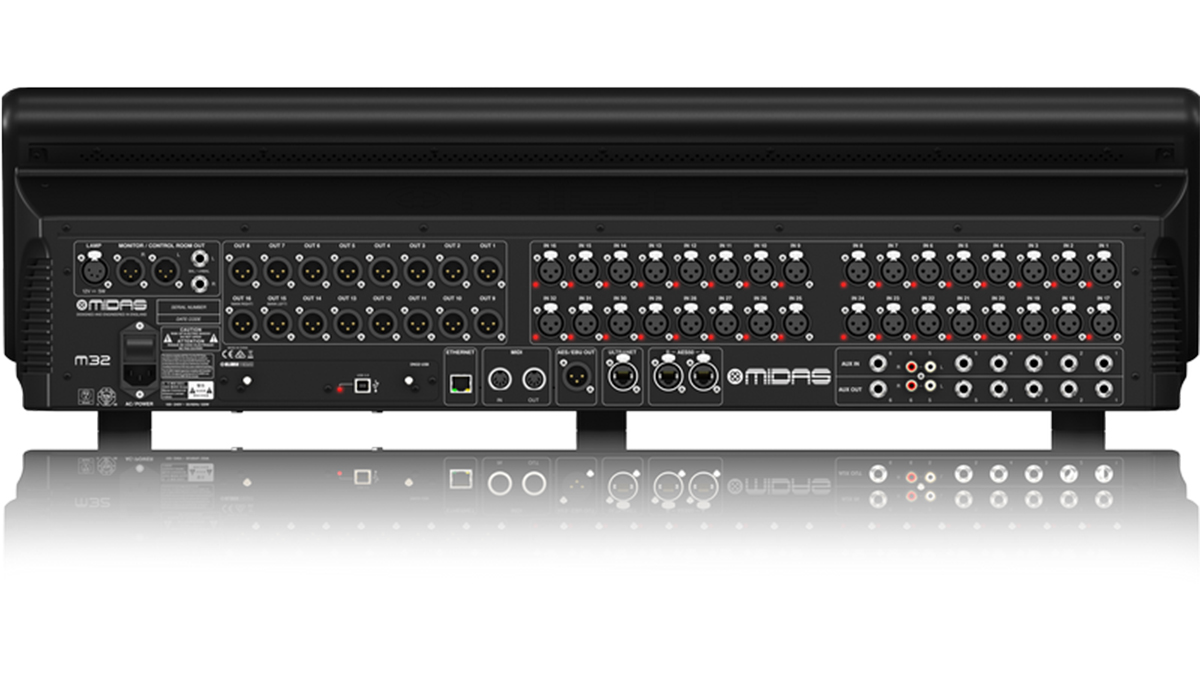
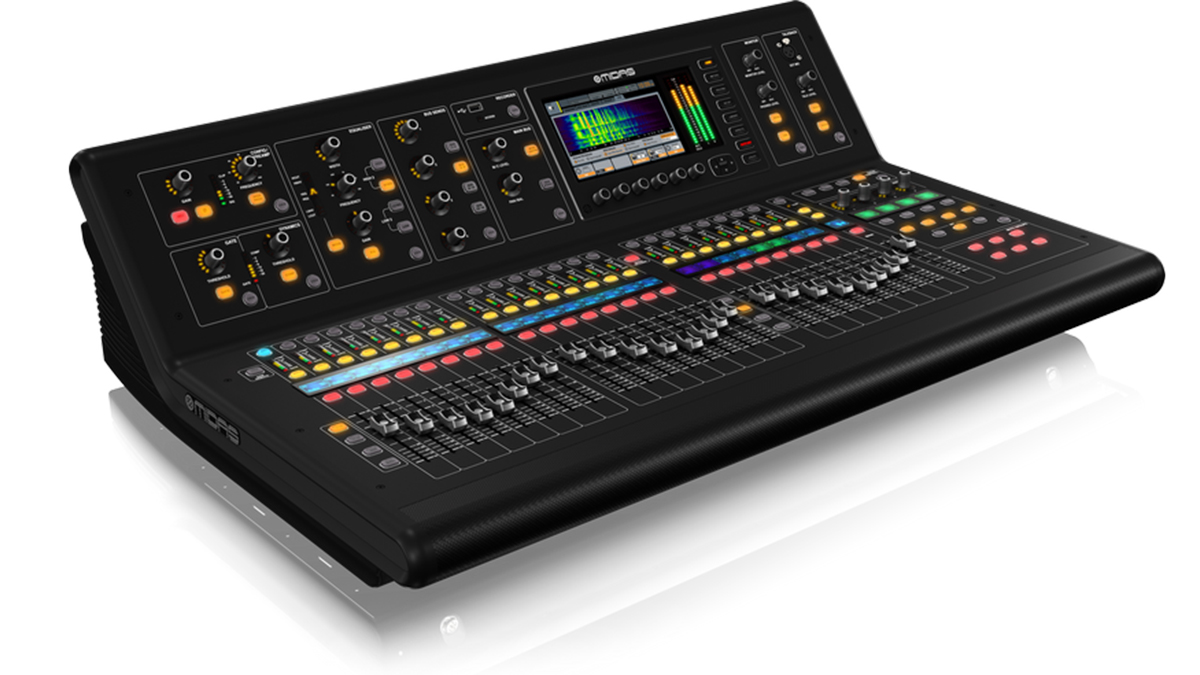
11. Midas M32
Our expert review:
Specifications
Reasons to buy
Reasons to avoid
Midas know a thing or two about live mixing desks, much of which is crammed into this awesome yet compact digital desk. With 32 award winning Midas preamps, 25 100mm motorised faders, LCD scribble strip, integrated talkback and per channel level and dynamics metering the M32 delivers traditional desk style features. However, these are coupled with global physical encoders and buttons for channel strip settings (EQ, dynamics and auxiliaries) that combine with the 7” TFT screen, 8 onboard effects slots, snapshots, and cross platform wireless remote control to deliver impressive digital flexibility as well.
Throw in plenty of physical connectivity, flexible routing and an expansion card slot that can house various I/O modules (USB, MADI, ADAT and Dante) and you’ve got professional level options as well. It’s not cheap but the impressive feature more than justifies the price.
Best console for live mixing: Buying advice
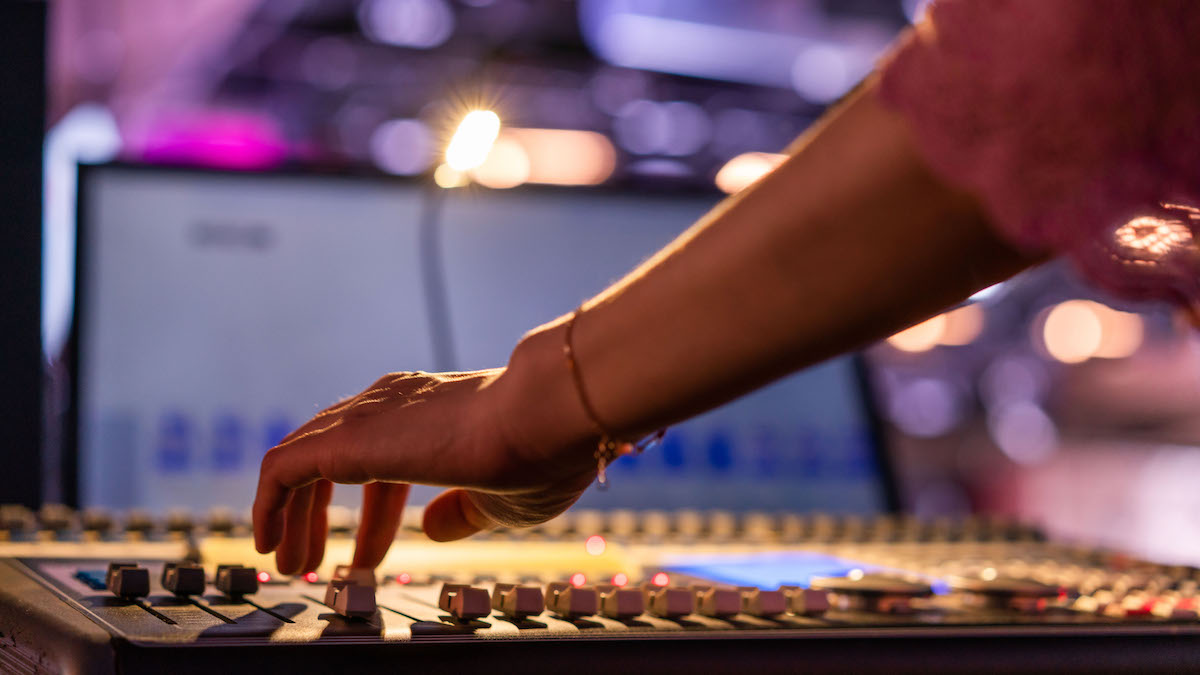
From a simple point of view, a live mixer serves to combine (or rather, mix) different audio signals and output a summed version to whatever speaker setup you’re using. It could be a single guitar and microphone or it could be a full orchestra. The fundamentals are the same. The mixer gives you a central place to connect every sound source, and then provides control over things like volume levels, input gain, panning and EQ. Some even offer up effects. With the sound going into the mixer, and each of the aforementioned parameters tweaked to your liking, the sound is then mixed together and sent outwards. Simple, right?
Where things can become complicated is that, as the size of the venue or band grows, so too does the amount of complexity. The venue itself can have a huge impact on the requirements of a mixer. It may be that the sound engineer at a venue is situated miles away from the stage and requires remote control over levels and the like. Or you may be looking for a way to record your live sessions to release online. For this, you’re looking for a desk that offers multitrack recording or functions as an audio interface. Using the latter method, you can simply connect a laptop to the desk and record directly into your DAW of choice.
The best live mixing console for you will depend largely on the scale of your operation. If, for example, you are a solo artist looking to mix a guitar, mic and perhaps a backing track, then your needs will be easily catered for with a simple, low-cost mixer. Often these can be picked up for pennies, and their fundamentally simple way of working means there’s little to go wrong. If, on the other hand, you’re looking to mic up a full band and control things remotely, then you will require something with a little more technological prowess.
Find out more about how we test music gear and services at MusicRadar.
Get the MusicRadar Newsletter
Want all the hottest music and gear news, reviews, deals, features and more, direct to your inbox? Sign up here.
Chris Corfield is a journalist with over 12 years of experience writing for some of the music world's biggest brands including Orange Amplification, MusicRadar, Guitar World, Total Guitar and Dawsons Music. Chris loves getting nerdy about everything from guitar and bass gear, to synths, microphones, DJ gear and music production hardware.
"Reggae is more freeform than the blues. But more important, reggae is for everyone": Bob Marley and the Wailers' Catch a Fire, track-by-track
“Part of a beautiful American tradition”: A music theory expert explains the country roots of Beyoncé’s Texas Hold ‘Em, and why it also owes a debt to the blues
